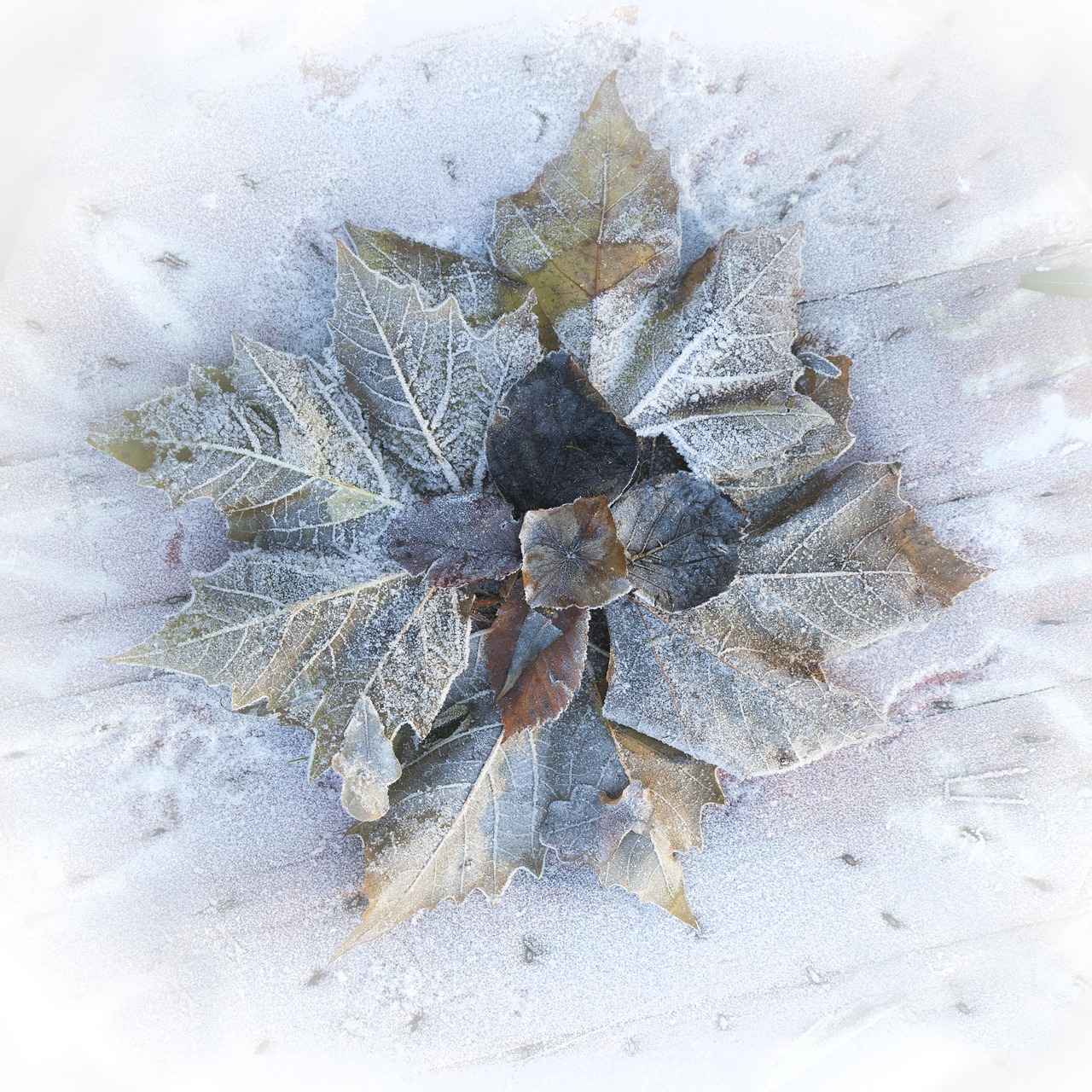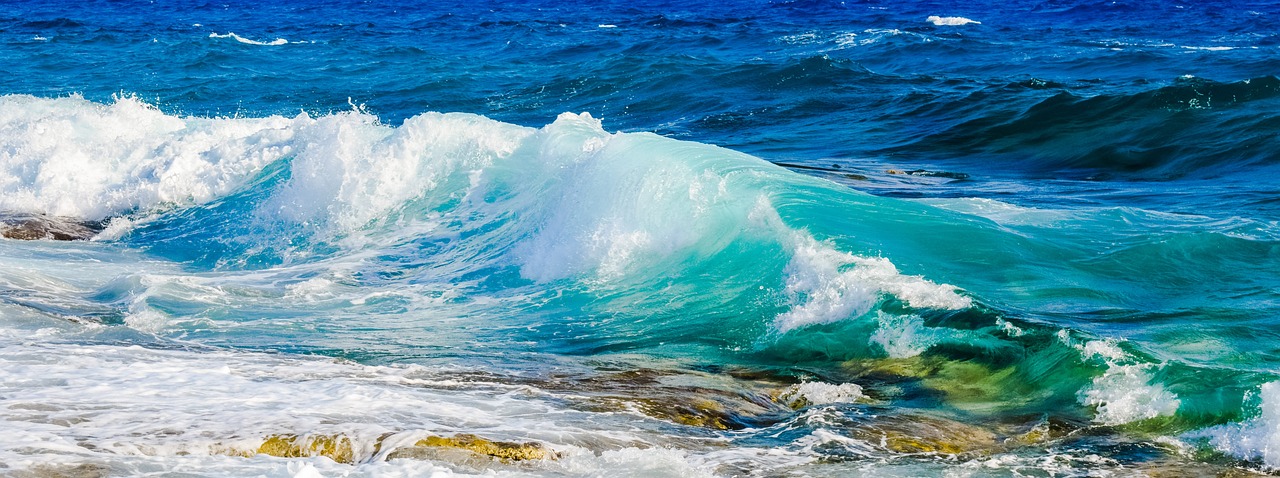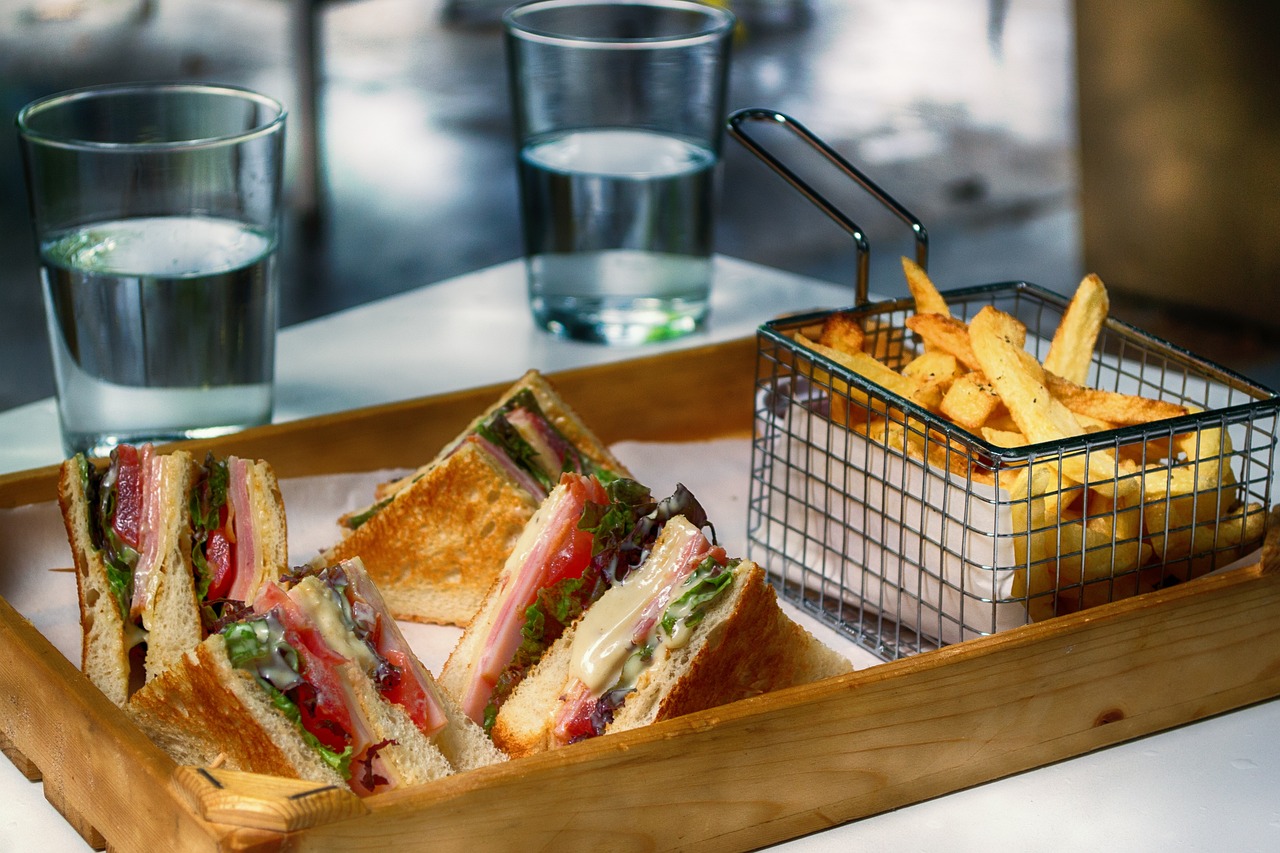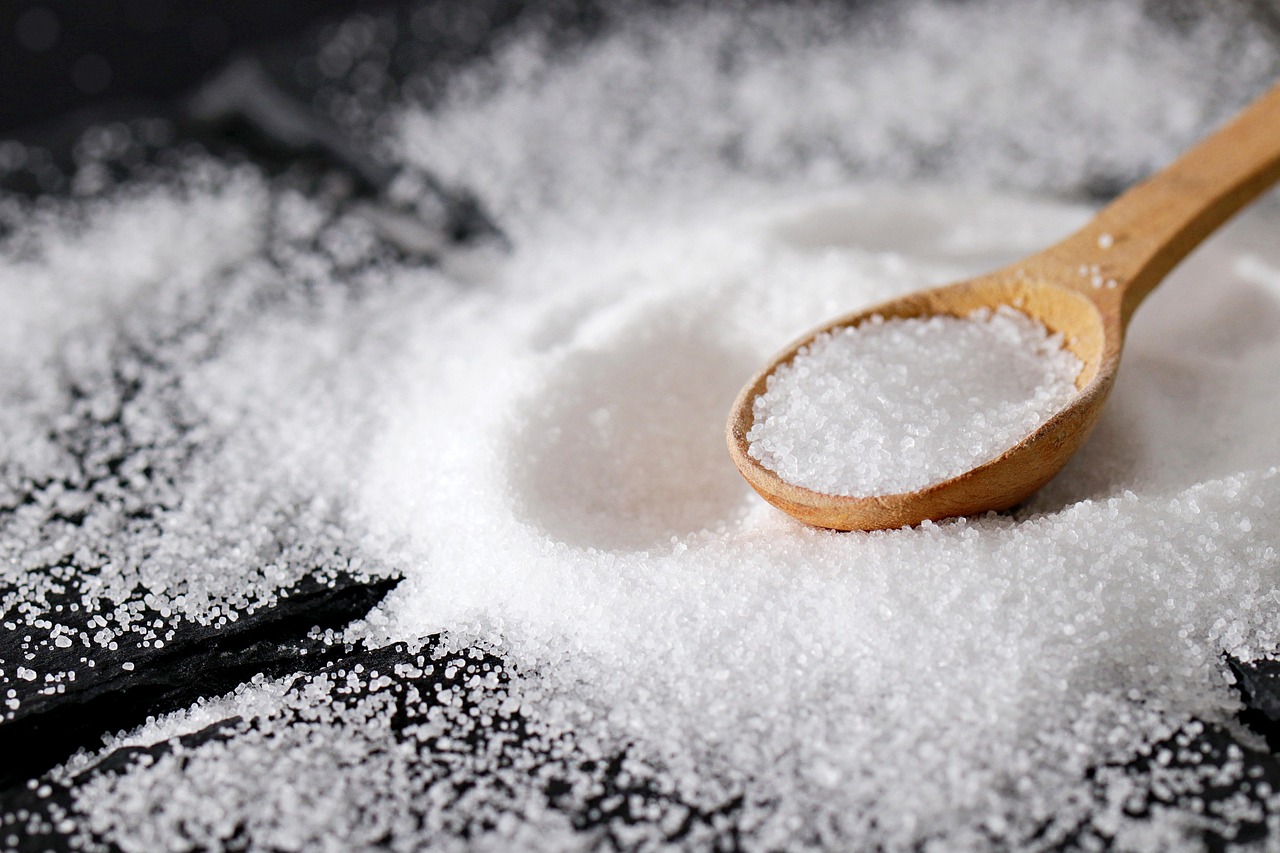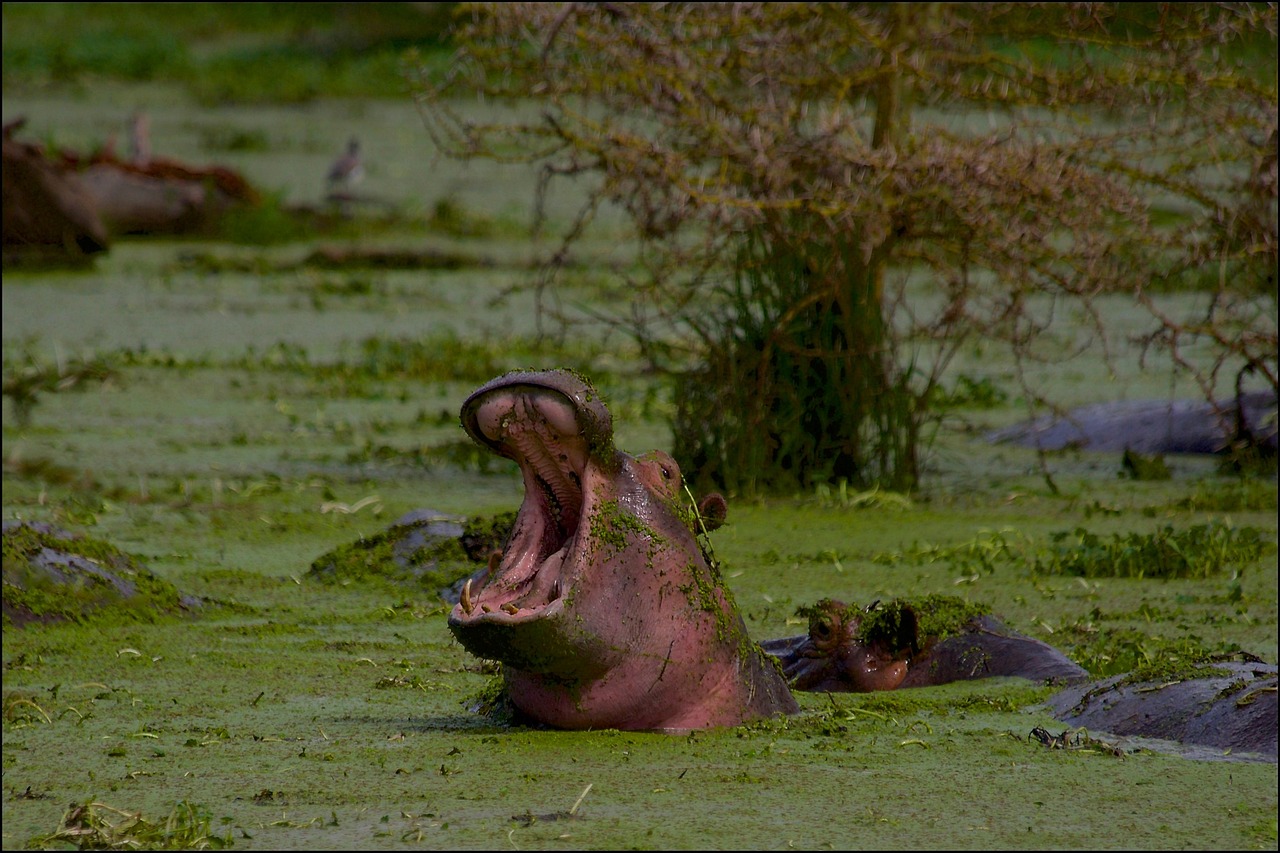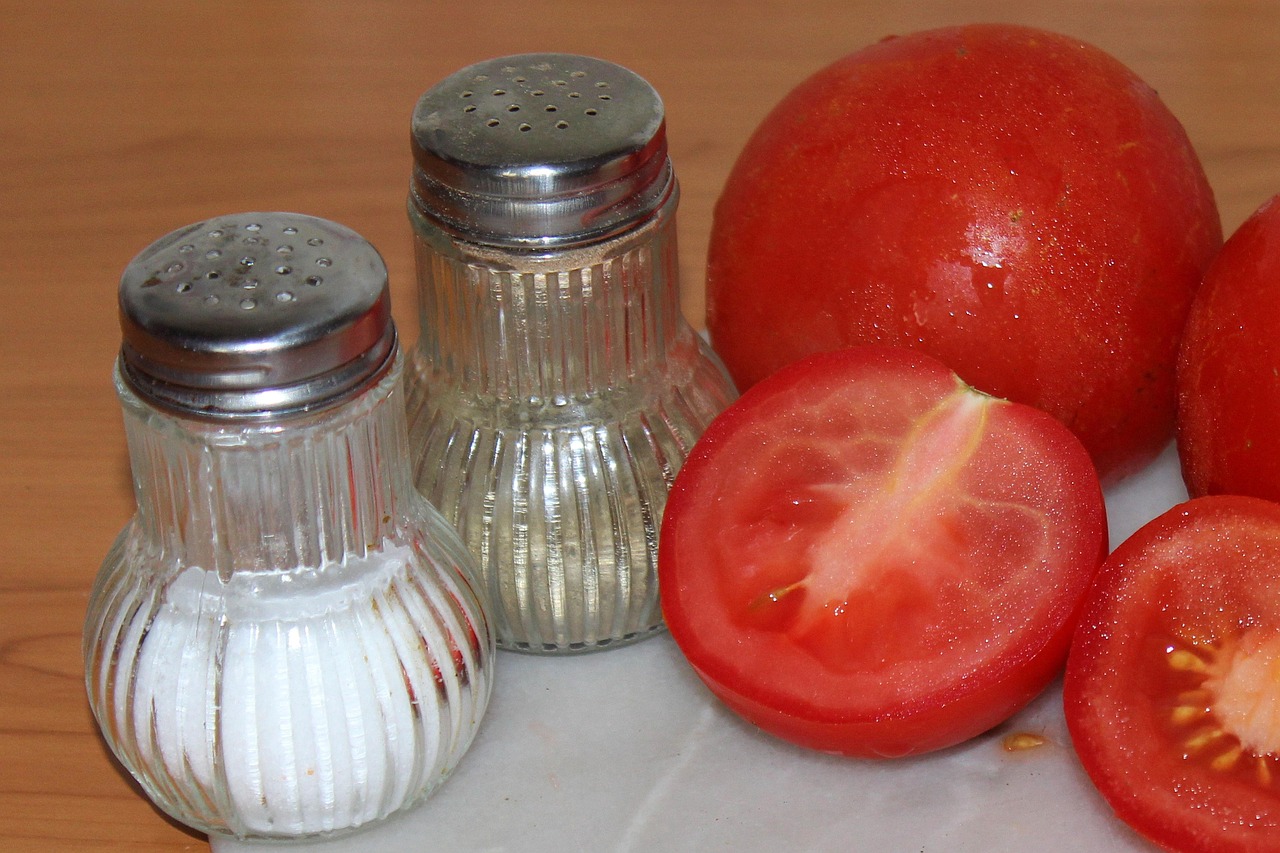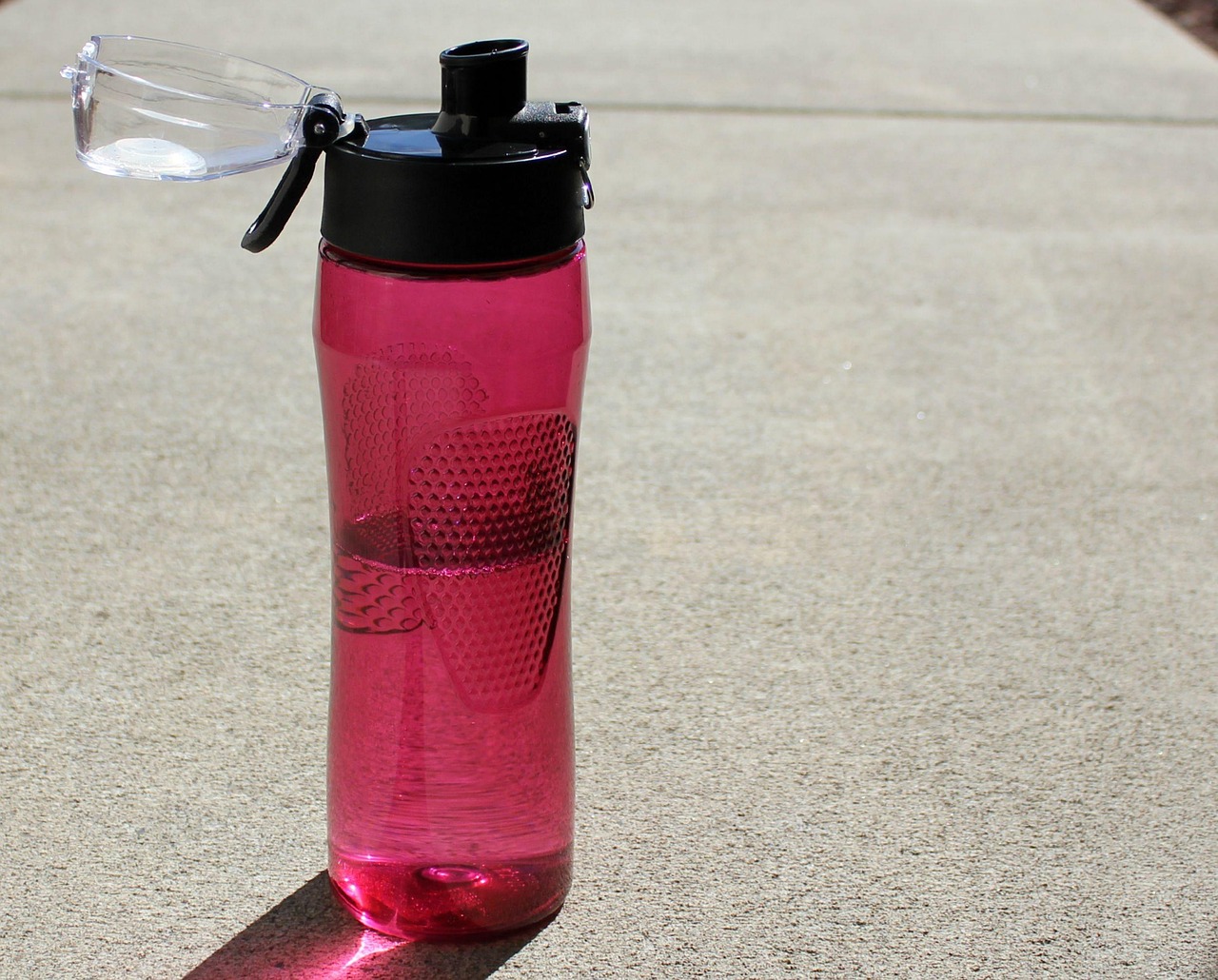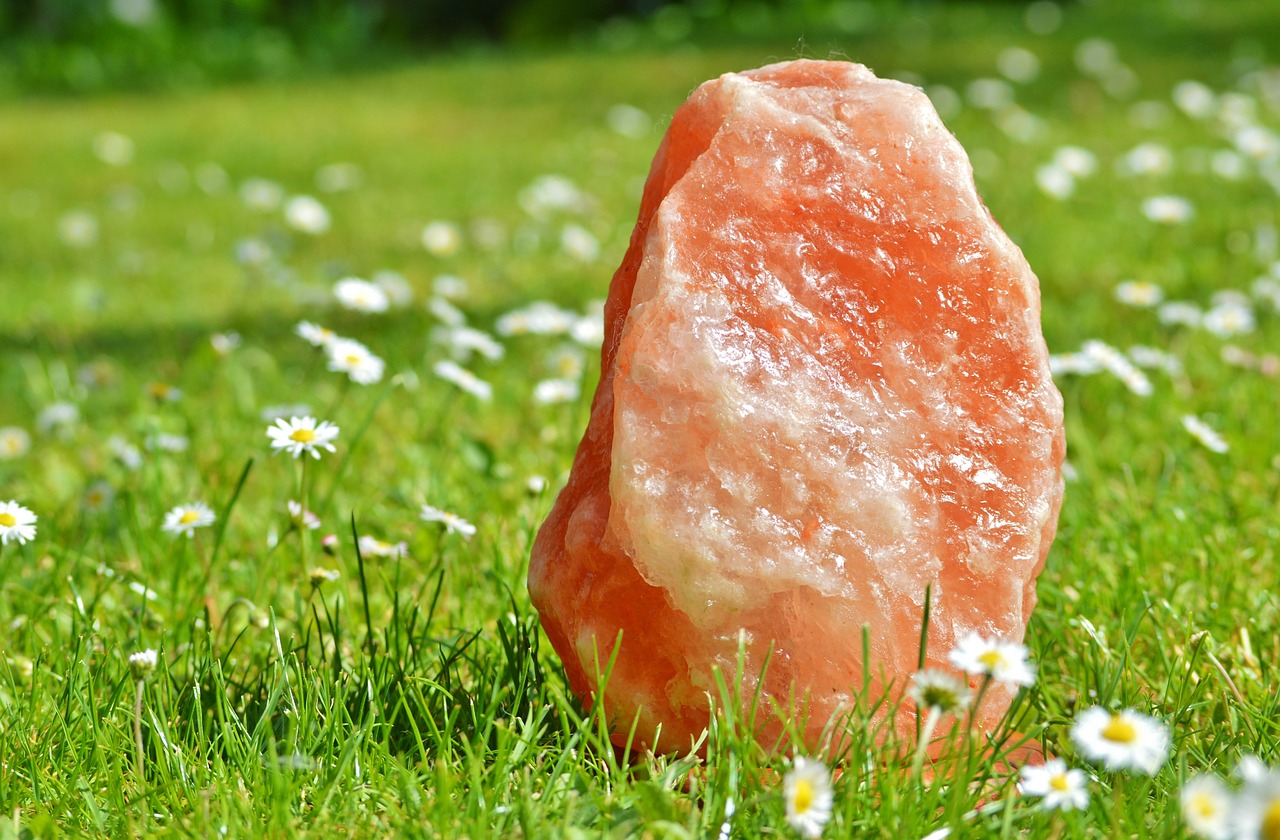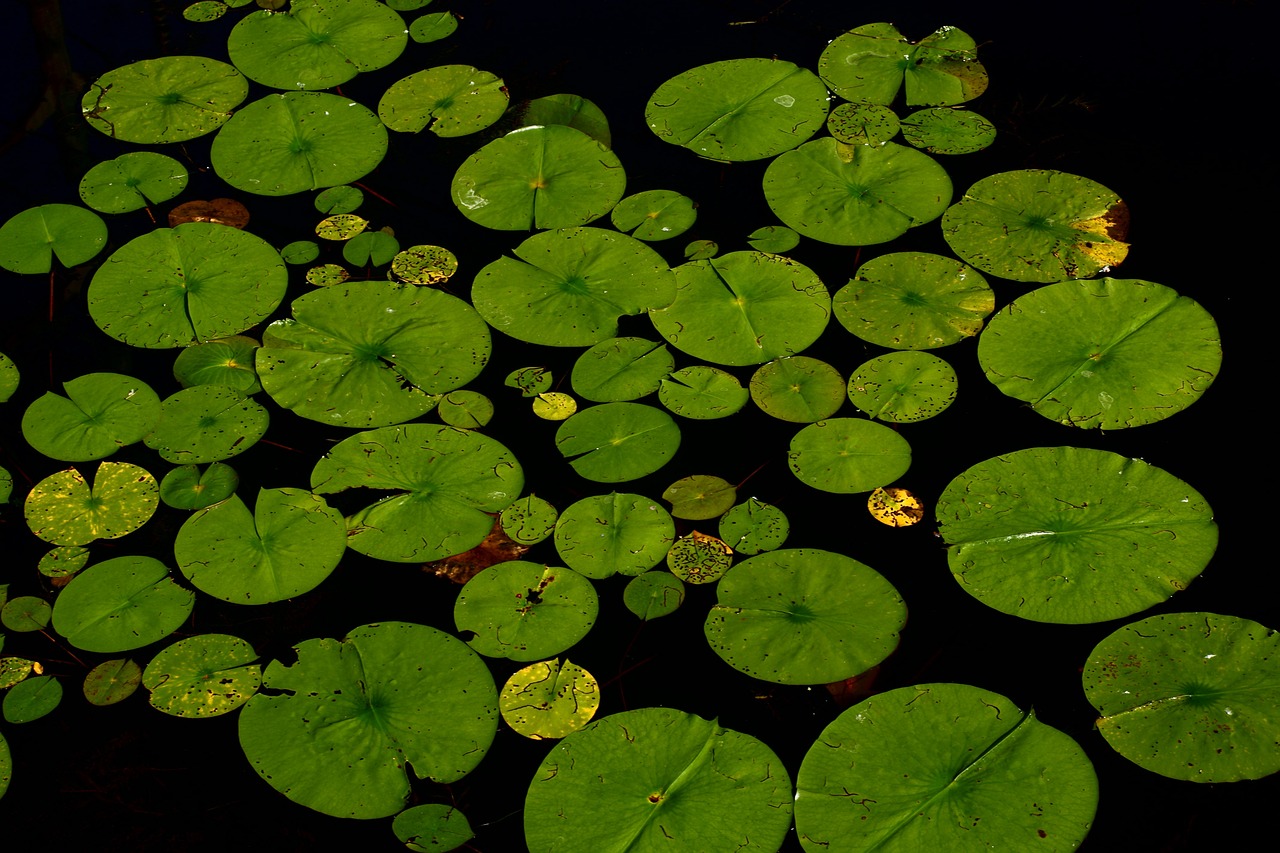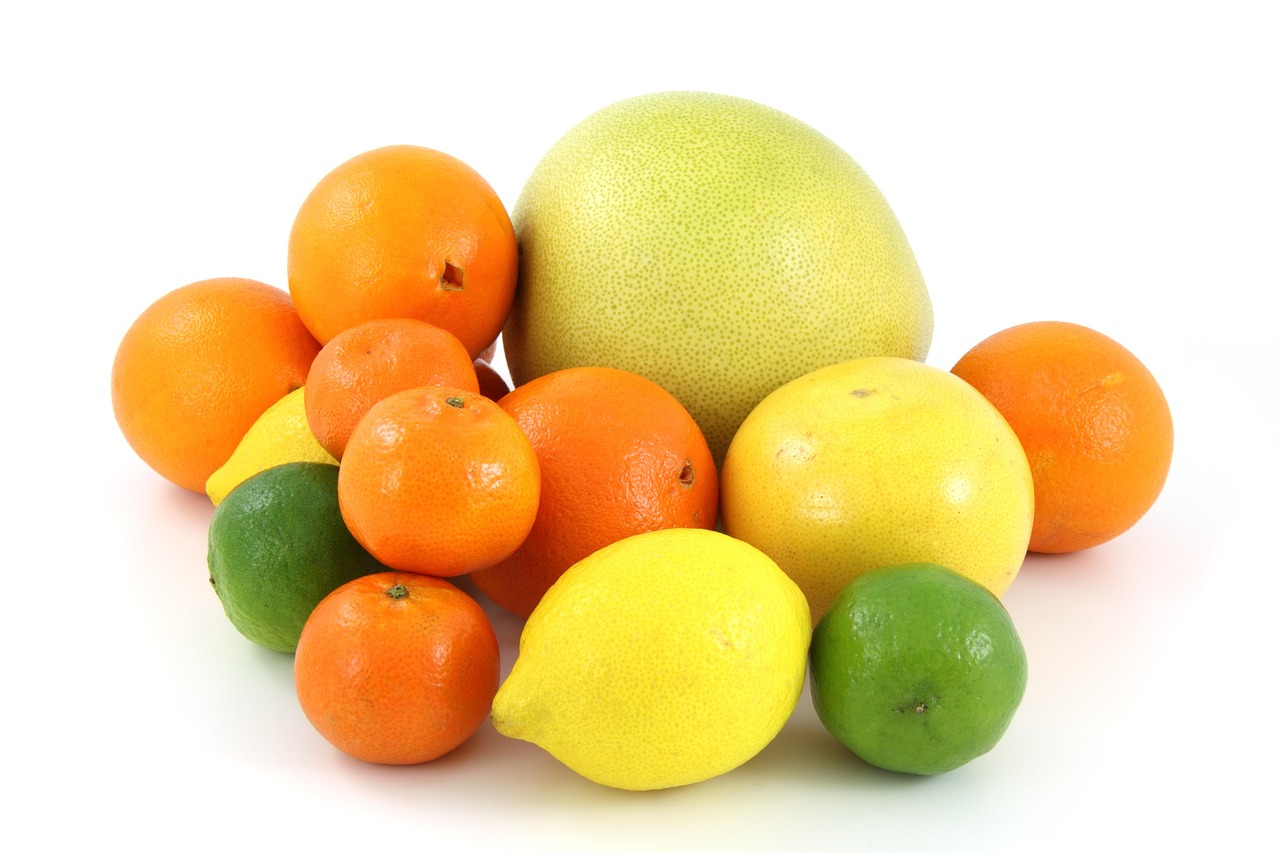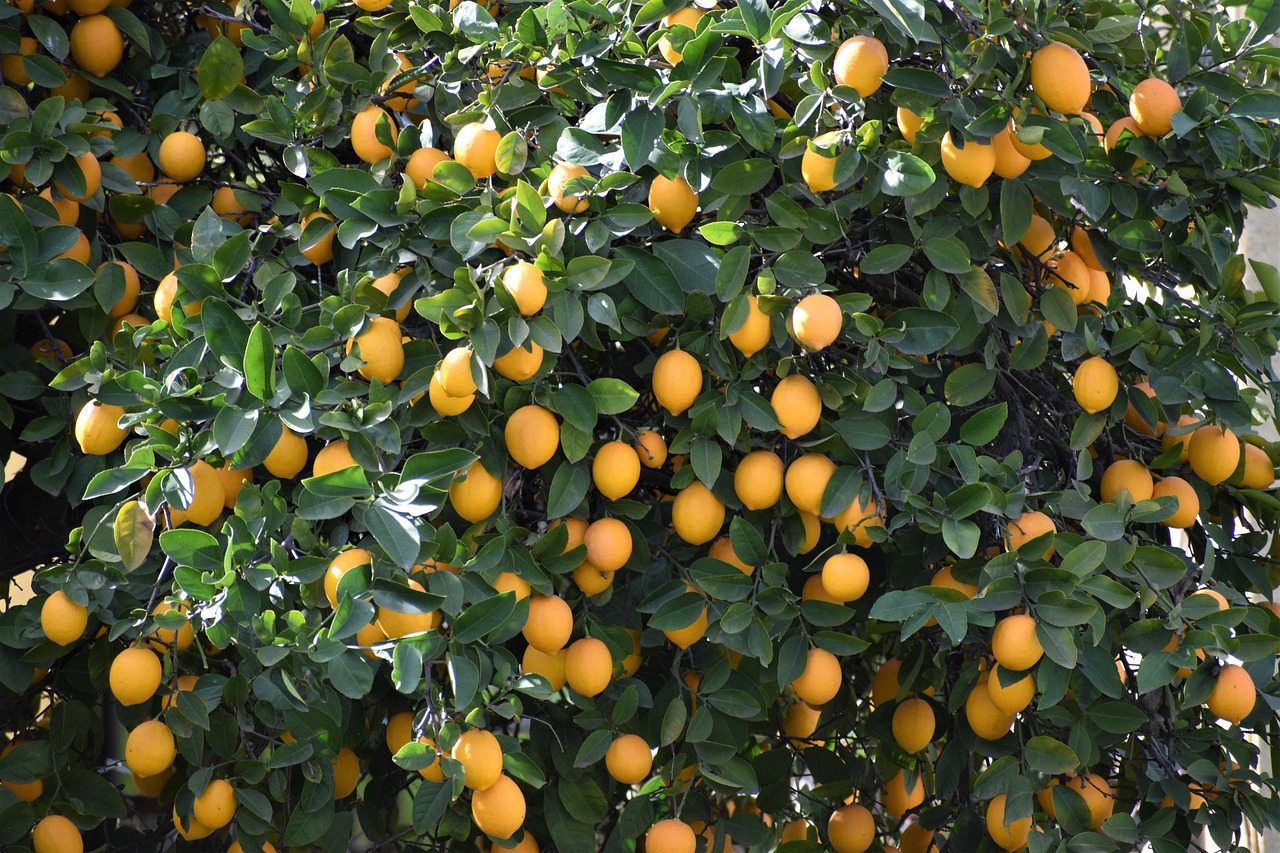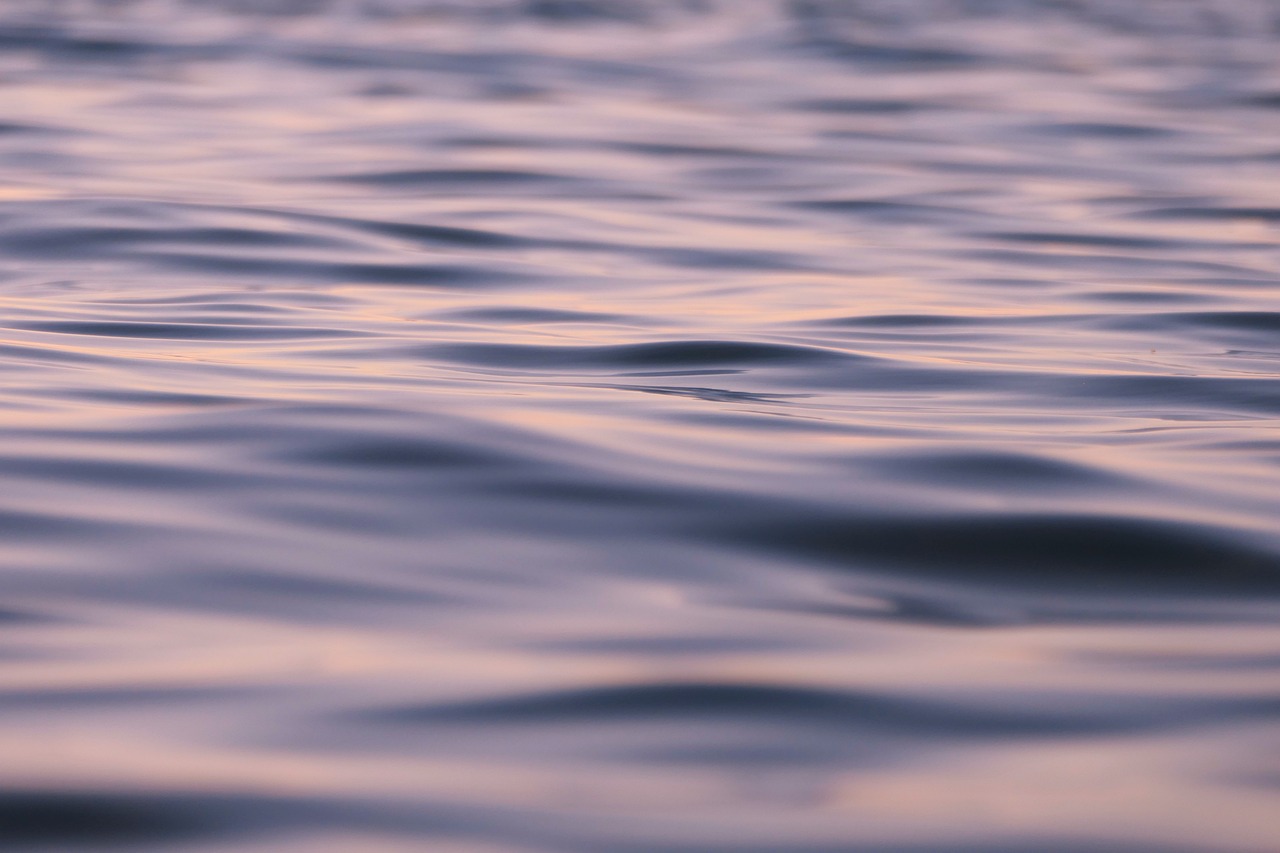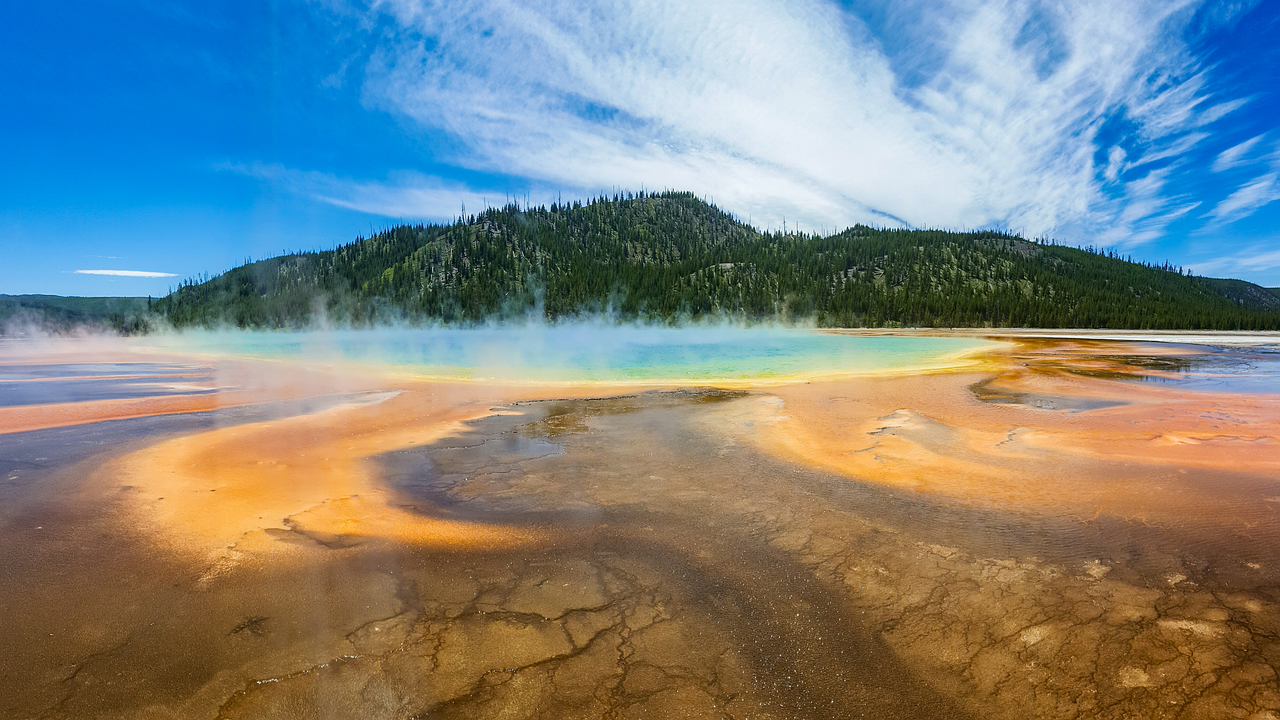This article investigates the fascinating Mpemba effect, a phenomenon where warm water can freeze faster than cold water under specific conditions. This counterintuitive occurrence has intrigued scientists and laypeople alike, prompting numerous studies and discussions. In this piece, we will explore the scientific explanations behind this effect, along with experimental evidence that supports or challenges its validity.
Understanding the Mpemba Effect
The Mpemba effect is named after Erasto Mpemba, a Tanzanian student who, in the 1960s, first documented this perplexing phenomenon. His observations sparked curiosity and research into why warmer water might freeze more quickly than its cooler counterpart. The initial reactions from the scientific community were mixed, leading to further inquiry and debate.
Historical Background of the Mpemba Effect
Erasto Mpemba’s groundbreaking experiment in 1963 involved freezing warm and cold water simultaneously. His findings were met with skepticism, yet they laid the groundwork for future research. Over the years, various scientists have conducted experiments to replicate Mpemba’s results, leading to a deeper understanding of the underlying mechanisms at play.
Scientific Explanations for the Mpemba Effect
- Evaporation and Cooling: One widely accepted explanation is that warm water, through evaporation, loses mass. As a result, the remaining water cools down more rapidly, potentially leading to faster freezing.
- Convection Currents: Warm water tends to create convection currents that enhance heat distribution. These currents may facilitate quicker cooling, contributing to the Mpemba effect.
Experimental Evidence Supporting the Mpemba Effect
Numerous experiments have sought to validate the Mpemba effect, yielding varied results. Some studies have successfully replicated the phenomenon, while others have produced inconclusive or contradictory findings. Notable experiments include:
- Laboratory tests that controlled environmental variables.
- Real-world applications, such as freezing water in different containers.
Factors Influencing the Freezing Process
Several factors can significantly affect the freezing rates of water, including:
- Water Purity: The presence of impurities can lower the freezing point of water, complicating the Mpemba effect.
- Container Shape and Size: The design of the container can influence heat transfer, impacting how quickly water freezes.
Real-World Applications of the Mpemba Effect
The Mpemba effect has practical implications in various fields:
- Food Preservation Techniques: Chefs and food scientists utilize the Mpemba effect to achieve quicker freezing times, enhancing food preservation.
- Climate Science Implications: Understanding the Mpemba effect can provide insights into natural ice formation processes, contributing to climate studies.
The Ongoing Debate
Despite extensive research, the Mpemba effect continues to spark debate among scientists. Some argue that the phenomenon is not universally applicable, while others advocate for its significance in understanding thermal dynamics. As research evolves, new findings may shed light on this captivating subject, offering further insights into the complexities of water behavior.
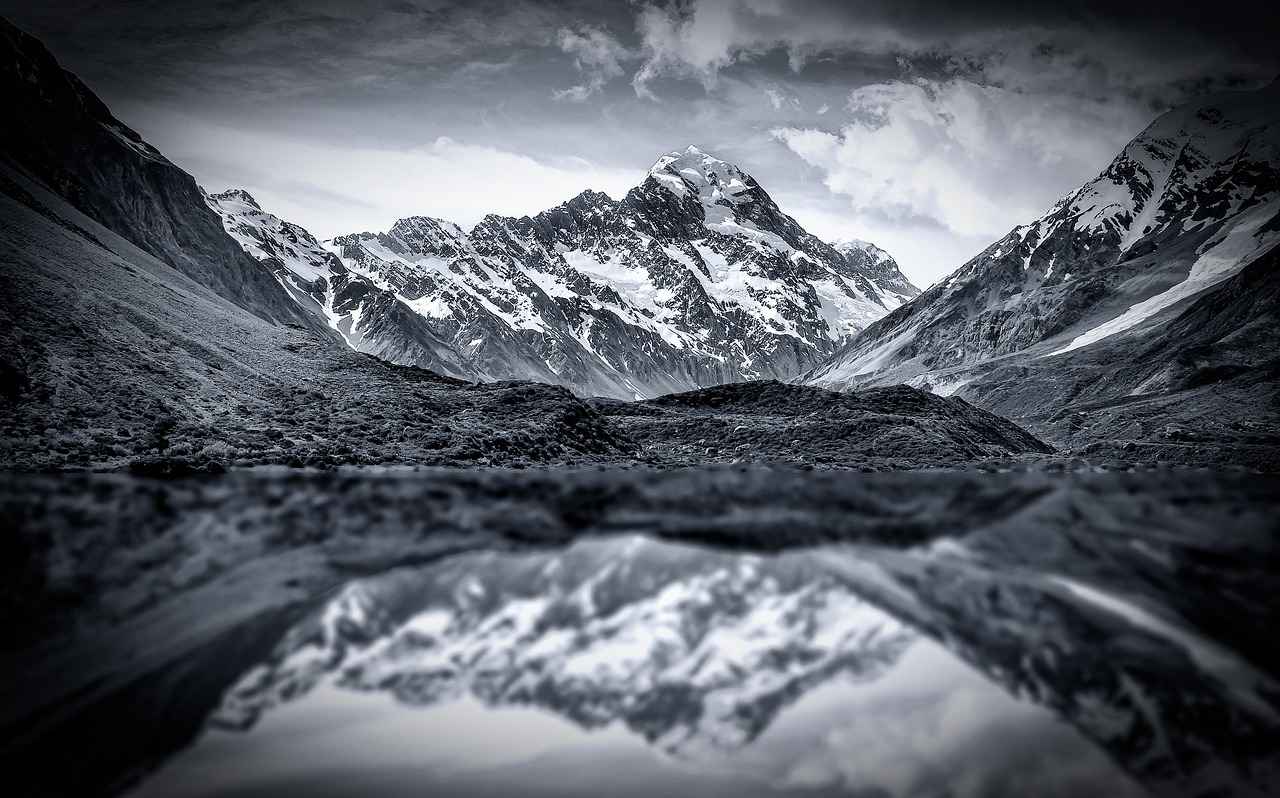
Understanding the Mpemba Effect
The Mpemba effect is a fascinating phenomenon that challenges our conventional understanding of physics. It describes the surprising situation where warm water freezes faster than cold water under certain conditions. This effect was named after Erasto Mpemba, a Tanzanian student who first observed this curious behavior in the 1960s. His discovery has sparked interest and debate among scientists for decades, leading to numerous studies and theories attempting to explain this counterintuitive occurrence.
To truly understand the Mpemba effect, it is essential to delve into its historical context. The initial observations made by Mpemba were not just a fluke; they highlighted a perplexing aspect of thermodynamics. In his experiments, he noted that when both warm and cold water were placed in freezers, the warm water often solidified faster. This led to a series of questions regarding the underlying mechanisms responsible for this effect.
Following Mpemba’s observations, the scientific community began to investigate this phenomenon more rigorously. Various researchers proposed theories to explain why warm water might freeze faster. Some of the early hypotheses included:
- Evaporation: One theory suggests that warmer water evaporates more quickly, reducing its overall volume and enabling it to cool down faster.
- Convection Currents: The movement of warmer water can create convection currents that enhance heat distribution, potentially leading to quicker freezing.
- Supercooling: Cold water might supercool below its freezing point without solidifying, giving the appearance that warm water freezes faster.
Despite these theories, the Mpemba effect remains a topic of contention. Experimental evidence has produced mixed results, with some studies supporting the phenomenon while others challenge its validity. Notable experiments have been conducted in controlled laboratory settings, as well as in real-world applications, aiming to replicate Mpemba’s findings.
Factors influencing the freezing process are varied and complex. For instance, the purity of water plays a crucial role. Impurities can alter the freezing point, affecting how quickly water transitions into ice. Additionally, the shape and size of the container holding the water significantly impact heat transfer rates, which can either facilitate or hinder the freezing process.
Understanding the Mpemba effect has practical implications across various fields. In the culinary world, chefs and food scientists leverage this knowledge to optimize food preservation techniques. By freezing warm foods quickly, they can maintain better texture and flavor. Furthermore, in climate science, the Mpemba effect may provide insights into natural ice formation processes, contributing to our understanding of environmental changes.
In summary, the Mpemba effect is a captivating topic that continues to intrigue scientists and laypeople alike. The interplay of various factors influencing freezing rates, combined with the historical context of its discovery, underscores the complexity of this phenomenon. As research progresses, we may uncover more about the mechanisms behind this curious effect, enriching our understanding of thermodynamics and its real-world applications.
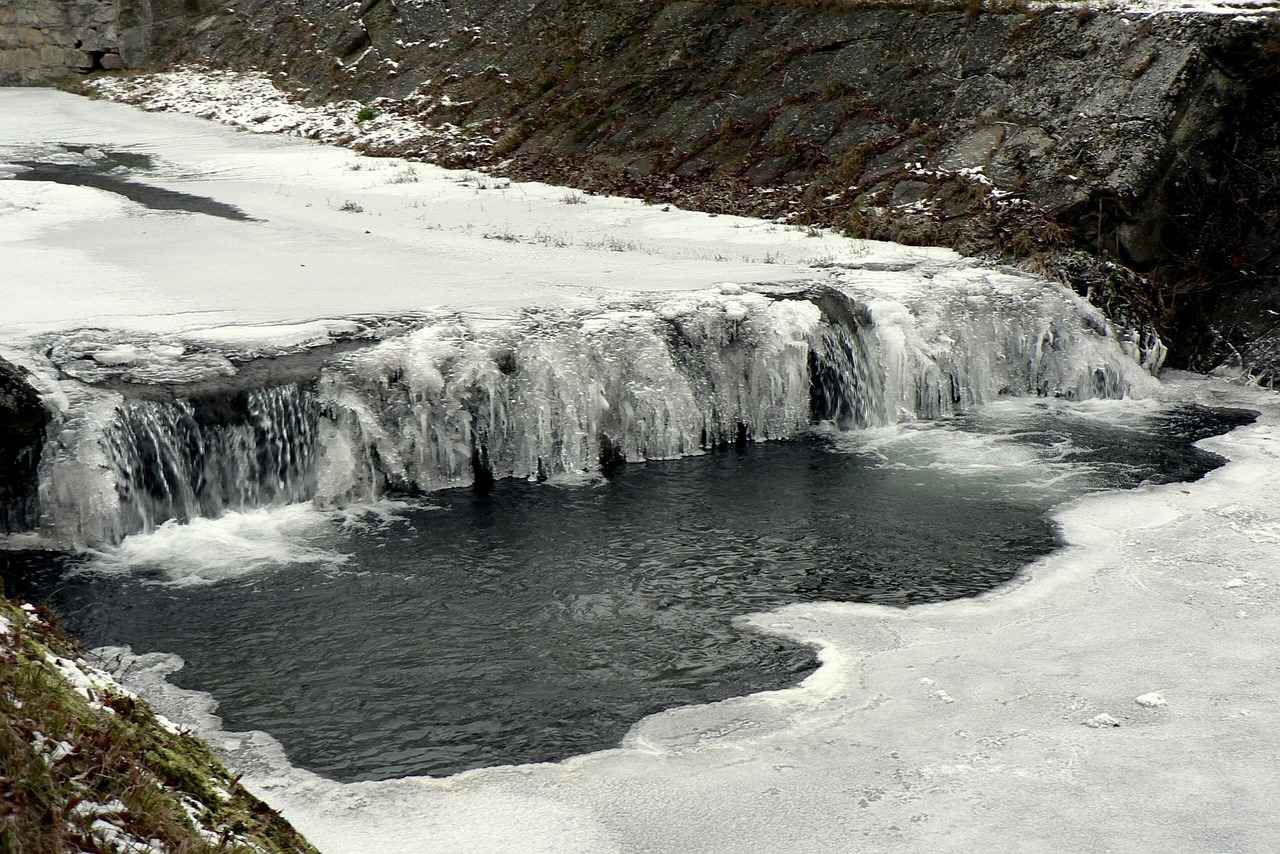
Historical Background of the Mpemba Effect
The Mpemba effect is a fascinating phenomenon that challenges our understanding of thermodynamics and the freezing process. Named after Erasto Mpemba, a Tanzanian student who made this observation in the 1960s, it raises the question: Can warm water freeze faster than cold water? This section delves into the historical background of the Mpemba effect, highlighting key experiments and studies that brought this intriguing occurrence to light.
In 1963, during a physics lesson, Mpemba noticed that when he placed warm ice cream mixture into a freezer, it froze faster than the cooler mixtures. This observation was met with skepticism from his peers and teachers, prompting him to conduct his own experiments. Mpemba meticulously documented his findings, which eventually caught the attention of scientists interested in this puzzling phenomenon.
One of the first scientific inquiries into the Mpemba effect came from Dr. Denis G. P. A. W. H. L. de Vries, who, in 1969, published a paper that detailed the conditions under which warm water could freeze faster. His experiments involved varying temperatures and container shapes, providing a framework for understanding the conditions that might lead to the Mpemba effect. Notably, he found that factors such as evaporation and convection currents played significant roles in the freezing process.
Subsequent studies conducted by various scientists aimed to replicate Mpemba’s results. In the 1970s, researchers like R. J. H. W. S. C. H. K. C. B. K. F. W. W. B. H. J. D. H. J. P. H. H. S. T. W. D. T. C. J. W. S. C. H. W. D. H. J. H. J. W. W. B. K. S. J. J. H. W. J. P. P. D. J. H. W. P. H. J. D. H. W. T. C. M. C. H. W. D. W. H. J. D. W. H. J. H. J. W. P. T. W. J. H. J. H. J. W. H. W. D. H. J. H. J. J. W. P. H. W. D. J. W. C. J. H. J. H. W. J. H. W. H. J. H. J. H. W. H. J. W. C. W. D. W. J. J. W. W. H. J. W. H. W. J. H. W. H. J. W. H. J. W. H. J. W. H. J. W. H. J. W. H. J. H. J. H. W. H. J. W. H. J. W. J. W. H. J. W. H. J. W. H. W. H. J. W. H. J. W. H. J. W. H. J. W. H. W. H. J. W. H. J. W. H. W. H. J. W. H. J. W. H. W. H. J. W. H. J. W. H. W. H. J. W. H. J. W. H. W. H. J. W. H. J. W. H. W. H. J. W. H. W. H. J. W. H. J. W. H. W. H. J. W. H. W. H. J. W. H. W. H. J. W. H. J. W. H. W. H. J. W. H. J. W. H. W. H. J. W. H. W. H. J. W. H. H. J. W. J. W. H. W. J. H. J. W. H. W. H. J. W. H. J. W. H. W. H. J. W. H. J. W. H. W. H. J. W. H. J. W. H. W. H. J. W. H. J. W. H. W. H. J. W. H. J. W. H. W. H. J. W. H. J. W. H. W. H. J. W. H. W. H. J. W. H. W. H. J. W. H. J. W. H. W. H. J. W. H. J. W. H. W. H. J. W. H. J. W. H. W. H. J. W. H. J. W. H. W. H. J. W. H. J. W. H. W. H. J. W. H. J. W. H. W. H. J. W. H. J. W. H. W. H. J. W. H. J. W. H. W. H. J. W. H. J. W. H. W. H. J. W. H. J. W. H. W. H. J. W. H. J. W. H. W. H. J. W. H. J. W. H. W. H. J. W. H. J. W. H. W. H. J. W. H. J. W. H. W. H. J. W. H. J. W. H. W. H. J. W. H. J. W. H. W. H. J. W. H. J. W. H. W. H. J. W. H. J. W. H. W. H. J. W. H. J. W. H. W. H. J. W. H. J. W. H. W. H. J. W. H. J. W. H. W. H. J. W. H. J. W. H. W. H. J. W. H. J. W. H. W. H. J. W. H. J. W. H. W. H. J. W. H. J. W. H. W. H. J. W. H. J. W. H. W. H. J. W. H. J. W. H. W. H. J. W. H. J. W. H. W. H. J. W. H. J. W. H. W. H. J. W. H. J. W. H. W. H. J. W. H. J. W. H. W. H. J. W. H. J. W. H. W. H. J. W. H. J. W. H. W. H. J. W. H. J. W. H. W. H. J. W. H. J. W. H. W. H. J. W. H. J. W. H. W. H. J. W. H. J. W. H. W. H. J. W. H. J. W. H. W. H. J. W. H. J. W. H. W. H. J. W. H. J. W. H. W. H. J. W. H. J. W. H. W. H. J. W. H. J. W. H. W. H. J. W. H. J. W. H. W. H. J. W. H. J. W. H. W. H. J. W. H. J. W. H. W. H. J. W. H. J. W. H. W. H. J. W. H. J. W. H. W. H. J. W. H. J. W. H. W. H. J. W. H. J. W. H. W. H. J. W. H. J. W. H. W. H. J. W. H. J. W. H. W. H. J. W. H. J. W. H. W. H. J. W. H. J. W. H. W. H. J. W. H. J. W. H. W. H. J. W. H. J. W. H. W. H. J. W. H. J. W. H. W. H. J. W. H. J. W. H. W. H. J. W. H. J. W. H. W. H. J. W. H. J. W. H. W. H. J. W. H. J. W. H. W. H. J. W. H. J. W. H. W. H. J. W. H. J. W. H. W. H. J. W. H. J. W. H. W. H. J. W. H. J. W. H. W. H. J. W. H. J. W. H. W. H. J. W. H. J. W. H. W. H. J. W. H. J. W. H. W. H. J. W. H. J. W. H. W. H. J. W. H. J. W. H. W. H. J. W. H. J. W. H. W. H. J. W. H. J. W. H. W. H. J. W. H. J. W. H. W. H. J. W. H. J. W. H. W. H. J. W. H. J. W. H. W. H. J. W. H. J. W. H. W. H. J. W. H. J. W. H. W. H. J. W. H. J. W. H. W. H. J. W. H. J. W. H. W. H. J. W. H. J. W. H. W. H. J. W. H. J. W. H. W. H. J. W. H. J. W. H. W. H. J. W. H. J. W. H. W. H. J. W. H. J. W. H. W. H. J. W. H. J. W. H. W. H. J. W. H. J. W. H. W. H. J. W. H. J. W. H. W. H. J. W. H. J. W. H. W. H. J. W. H. J. W. H. W. H. J. W. H. J. W. H. W. H. J. W. H. J. W. H. W. H. J. W. H. J. W. H. W. H. J. W. H. J. W. H. W. H. J. W. H. J. W. H. W. H. J. W. H. J. W. H. W. H. J. W. H. J. W. H. W. H. J. W. H. J. W. H. W. H. J. W. H. J. W. H. W. H. J. W. H. J. W. H. W. H. J. W. H. J. W. H. W. H. J. W. H. J. W. H. W. H. J. W. H. J. W. H. W. H. J. W. H. J. W. H. W. H. J. W. H. J. W. H. W. H. J. W. H. J. W. H. W. H. J. W. H. J. W. H. W. H. J. W. H. J. W. H. W. H. J. W. H. J. W. H. W. H. J. W. H. J. W. H. W. H. J. W. H. J. W. H. W. H. J. W. H. J. W. H. W. H. J. W. H. J. W. H. W. H. J. W. H. J. W. H. W. H. J. W. H. J. W. H. W. H. J. W. H. J. W. H. W. H. J. W. H. J. W. H. W. H. J. W. H. J. W. H. W. H. J. W. H. J. W. H. W. H. J. W. H. J. W. H. W. H. J. W. H. J. W. H. W. H. J. W. H. J. W. H. W. H. J. W. H. J. W. H. W. H. J. W. H. J. W. H. W. H. J. W. H. J. W. H. W. H. J. W. H. J. W. H. W. H. J. W. H. J. W. H. W. H. J. W. H. J. W. H. W. H. J. W. H. J. W. H. W. H. J. W. H. J. W. H. W. H. J. W. H. J. W. H. W. H. J. W. H. J. W. H. W. H. J. W. H. J. W. H. W. H. J. W. H. J. W. H. W. H. J. W. H. J. W. H. W. H. J. W. H. J. W. H. W. H. J. W. H. J. W. H. W. H. J. W. H. J. W. H. W. H. J. W. H. J. W. H. W. H. J. W. H. J. W. H. W. H. J. W. H. J. W. H. W. H. J. W. H. J. W. H. W. H. J. W. H. J. W. H. W. H. J. W. H. J. W. H. W. H. J. W. H. J. W. H. W. H. J. W. H. J. W. H. W. H. J. W. H. J. W. H. W. H. J. W. H. J. W. H. W. H. J. W. H. J. W. H. W. H. J. W. H. J. W. H. W. H. J. W. H. J. W. H. W. H. J. W. H. J. W. H. W. H. J. W. H. J. W. H. W. H. J. W. H. J. W. H. W. H. J. W. H. J. W. H. W. H. J. W. H. J. W. H. W. H. J. W. H. J. W. H. W. H. J. W. H. J. W. H. W. H. J. W. H. J. W. H. W. H. J. W. H. J. W. H. W. H. J. W. H. J. W. H. W. H. J. W. H. J. W. H. W. H. J. W. H. J. W. H. W. H. J. W. H. J. W. H. W. H. J. W. H. J. W. H. W. H. J. W. H. J. W. H. W. H. J. W. H. J. W. H. W. H. J. W. H. J. W. H. W. H. J. W. H. J. W. H. W. H. J. W. H. J. W. H. W. H. J. W. H. J. W. H. W. H. J. W. H. J. W. H. W. H. J. W. H. J. W. H. W. H. J. W. H. J. W. H. W. H. J. W. H. J. W. H. W. H. J. W. H. J. W. H. W. H. J. W. H. J. W. H. W. H. J. W. H. J. W. H. W. H. J. W. H. J. W. H. W. H. J. W. H. J. W. H. W. H. J. W. H. J. W. H. W. H. J. W. H. J. W. H. W. H. J. W. H. J. W. H. W. H. J. W. H. J. W. H. W. H. J. W. H. J. W. H. W. H. J. W. H. J. W. H. W. H. J. W. H. J. W. H. W. H. J. W. H. J. W. H. W. H. J. W. H. J. W. H. W. H. J. W. H. J. W. H. W. H. J. W. H. J. W. H. W. H. J. W. H. J. W. H. W. H. J. W. H. J. W. H. W. H. J. W. H. J. W. H. W. H. J. W. H. J. W. H. W. H. J. W. H. J. W. H. W. H. J. W. H. J. W. H. W. H. J. W. H. J. W. H. W. H. J. W. H. J. W. H. W. H. J. W. H. J. W. H. W. H. J. W. H. J. W. H. W. H. J. W. H. J. W. H. W. H. J. W. H. J. W. H. W. H. J. W. H. J. W. H. W. H. J. W. H. J. W. H. W. H. J. W. H. J. W. H. W. H. J. W. H. J. W. H. W. H. J. W. H. J. W. H. W. H. J. W. H. J. W. H. W. H. J. W. H. J. W. H. W. H. J. W. H. J. W. H. W. H. J. W. H. J. W. H. W. H. J. W. H. J. W. H. W. H. J. W. H. J. W. H. W. H. J. W. H. J. W. H. W. H. J. W. H. J. W. H. W. H. J. W. H. J. W. H. W. H. J. W. H. J. W. H. W. H. J. W. H. J. W. H. W. H. J. W. H. J. W. H. W. H. J. W. H. J. W. H. W. H. J. W. H. J. W. H. W. H. J. W. H. J. W. H. W. H. J. W. H. J. W. H. W. H. J. W. H. J. W. H. W. H. J. W. H. J. W. H. W. H. J. W. H. J. W. H. W. H. J. W. H. J. W. H. W. H. J. W. H. J. W. H. W. H. J. W. H. J. W. H. W. H. J. W. H. J. W. H. W. H. J. W. H. J. W. H. W. H. J. W. H. J. W. H. W. H. J. W. H. J. W. H. W. H. J. W. H. J. W. H. W. H. J. W. H. J. W. H. W. H. J. W. H. J. W. H. W. H. J. W. H. J. W. H. W. H. J. W. H. J. W. H. W. H. J. W. H. J. W. H. W. H. J. W. H. J. W. H. W. H. J. W. H. J. W. H. W. H. J. W. H. J. W. H. W. H. J. W. H. J. W. H. W. H. J. W. H. J. W. H. W. H. J. W. H. J. W. H. W. H. J. W. H. J. W. H. W. H. J. W. H. J. W. H. W. H. J. W. H. J. W. H. W. H. J. W. H. J. W. H. W. H. J. W. H. J. W. H. W. H. J. W. H. J. W. H. W. H. J. W. H. J. W. H. W. H. J. W. H. J. W. H. W. H. J. W. H. J. W. H. W. H. J. W. H. J. W. H. W. H. J. W. H. J. W. H. W. H. J. W. H. J. W. H. W. H. J. W. H. J. W. H. W. H. J. W. H. J. W. H. W. H. J. W. H. J. W. H. W. H. J. W. H. J. W. H. W. H. J. W. H. J. W. H. W. H. J. W. H. J. W. H. W. H. J. W. H. J. W. H. W. H. J. W. H. J. W. H. W. H. J. W. H. J. W. H. W. H. J. W. H. J. W. H. W. H. J. W. H. J. W. H. W. H. J. W. H. J. W. H. W. H. J. W. H. J. W. H. W. H. J. W. H. J. W. H. W. H. J. W. H. J. W. H. W. H. J. W. H. J. W. H. W. H. J. W. H. J. W. H. W. H. J. W. H. J. W. H. W. H. J. W. H. J. W. H. W. H. J. W. H. J. W. H. W. H. J. W. H. J. W. H. W. H. J. W. H. J. W. H. W. H. J. W. H. J. W. H. W. H. J. W. H. J. W. H. W. H. J. W. H. J. W. H. W. H. J. W. H. J. W. H. W. H. J. W. H. J. W. H. W. H. J. W. H. J. W. H. W. H. J. W. H. J. W. H. W. H. J. W. H. J. W. H. W. H. J. W. H. J. W. H. W. H. J. W. H. J. W. H. W. H. J. W. H. J. W. H. W. H. J. W. H. J. W. H. W. H. J. W. H. J. W. H. W. H. J. W. H. J. W. H. W. H. J. W. H. J. W. H. W. H. J. W. H. J. W. H. W. H. J. W. H. J. W. H. W. H. J. W. H. J. W. H. W. H. J. W. H. J. W. H. W. H. J. W. H. J. W. H. W. H. J. W. H. J. W. H. W. H. J. W. H. J. W. H. W. H. J. W. H. J. W. H. W. H. J. W. H. J. W. H. W. H. J. W. H. J. W. H. W. H. J. W. H. J. W. H. W. H. J. W. H. J. W. H. W. H. J. W. H. J. W. H. W. H. J. W. H. J. W. H. W. H. J. W. H. J. W. H. W. H. J. W. H. J. W. H. W. H. J. W. H. J. W. H. W. H. J. W. H. J. W. H. W. H. J. W. H. J. W. H. W. H. J. W. H. J. W. H. W. H. J. W. H. J. W. H. W. H. J. W. H. J. W. H. W. H. J. W. H. J. W. H. W. H. J. W. H. J. W. H. W. H. J. W. H. J. W. H. W. H. J. W. H. J. W. H. W. H. J. W. H. J. W. H. W. H. J. W. H. J. W. H. W. H. J. W. H. J. W. H. W. H. J. W. H. J. W. H. W. H. J. W. H. J. W. H. W. H. J. W. H. J. W. H. W. H. J. W. H. J. W. H. W. H. J. W. H. J. W. H. W. H. J. W. H. J. W. H. W. H. J. W. H. J. W. H. W. H. J. W. H. J. W. H. W. H. J. W. H. J. W. H. W. H. J. W. H. J. W. H. W. H. J. W. H. J. W. H. W. H. J. W. H. J. W. H. W. H. J. W. H. J. W. H. W. H. J. W. H. J. W. H. W. H. J. W. H. J. W. H. W. H. J. W. H. J. W. H. W. H. J. W. H. J. W. H. W. H. J. W. H. J. W. H. W. H. J. W. H. J. W. H. W. H. J. W. H. J. W. H. W. H. J. W. H. J. W. H. W. H. J. W. H. J. W. H. W. H. J. W. H. J. W. H. W. H. J. W. H. J. W. H. W. H. J. W. H. J. W. H. W. H. J. W. H. J. W. H. W. H. J. W. H. J. W. H. W. H. J. W. H. J. W. H. W. H. J. W. H. J. W. H. W. H. J. W. H. J. W. H. W. H. J. W. H. J. W. H. W. H. J. W. H. J. W. H. W. H. J. W. H. J. W. H. W. H. J. W. H. J. W. H. W. H. J. W. H. J. W. H. W. H. J. W. H. J. W. H. W. H. J. W. H. J. W. H. W. H. J. W. H. J. W. H. W. H. J. W. H. J. W. H. W. H. J. W. H. J. W. H. W. H. J. W. H. J. W. H. W. H. J. W. H. J. W. H. W. H. J. W. H. J. W. H. W. H. J. W. H. J. W. H. W. H. J. W. H. J. W. H. W. H. J. W. H. J. W. H. W. H. J. W. H. J. W. H. W. H. J. W. H. J. W. H. W. H. J. W. H. J. W. H. W. H. J. W. H. J. W. H. W. H. J. W. H. J. W. H. W. H. J. W. H. J. W. H. W. H. J. W. H. J. W. H. W. H. J. W. H. J. W. H. W. H. J. W. H. J. W. H. W. H. J. W. H. J. W. H. W. H. J. W. H. J. W. H. W. H. J. W. H. J. W. H. W. H. J. W. H. J. W. H. W. H. J. W. H. J. W. H. W. H. J. W. H. J. W. H. W. H. J. W. H. J. W. H. W. H. J. W. H. J. W. H. W. H. J. W. H. J. W. H. W. H. J. W. H. J. W. H. W. H. J. W. H. J. W. H. W. H. J. W. H. J. W. H. W. H. J. W. H. J. W. H. W. H. J. W. H. J. W. H. W. H. J. W. H. J. W. H. W. H. J. W. H. J. W. H. W. H. J. W. H. J. W. H. W. H. J. W. H. J. W. H. W. H. J. W. H. J. W. H. W. H. J. W. H. J. W. H. W. H. J. W. H. J. W. H. W. H. J. W. H. J. W. H. W. H. J. W. H. J. W. H. W. H. J. W. H. J. W. H. W. H. J. W. H. J. W. H. W. H. J. W. H. J. W. H. W. H. J. W. H. J. W. H. W. H. J. W. H. J. W. H. W. H. J. W. H. J. W. H. W. H. J. W. H. J. W. H. W. H. J. W. H. J. W. H. W. H. J. W. H. J. W. H. W. H. J. W. H. J. W. H. W. H. J. W. H. J. W. H. W. H. J. W. H. J. W. H. W. H. J. W. H. J. W. H. W. H. J. W. H. J. W. H. W. H. J. W. H. J. W. H. W. H. J. W. H. J. W. H. W. H. J. W. H. J. W. H. W. H. J. W. H. J. W. H. W. H. J. W. H. J. W. H. W. H. J. W. H. J. W. H. W. H. J. W. H. J. W. H. W. H. J. W. H. J. W. H. W. H. J. W. H. J. W. H. W. H. J. W. H. J. W. H. W. H. J. W. H. J. W. H. W. H. J. W. H. J. W. H. W. H. J. W. H. J. W. H. W. H. J. W. H. J. W. H. W. H. J. W. H. J. W. H. W. H. J. W. H. J. W. H. W. H. J. W. H. J. W. H. W. H. J. W. H. J. W. H. W. H. J. W. H. J. W. H. W. H. J. W. H. J. W. H. W. H. J. W. H. J. W. H. W. H. J. W. H. J. W. H. W. H. J. W. H. J. W. H. W. H. J. W. H. J. W. H. W. H. J. W. H. J. W. H. W. H. J. W. H. J. W. H. W. H. J. W. H. J. W. H. W. H. J. W. H. J. W. H. W. H. J. W. H. J. W. H. W. H. J. W. H. J. W. H. W. H. J. W. H. J. W. H. W. H. J. W. H. J. W. H. W. H. J. W. H. J. W. H. W. H. J. W. H. J. W. H. W. H. J. W. H. J. W. H. W. H. J. W. H. J. W. H. W. H. J. W. H. J. W. H. W. H. J. W. H. J. W. H. W. H. J. W. H. J. W. H. W. H. J. W. H. J. W. H. W. H. J. W. H. J. W. H. W. H. J. W. H. J. W. H. W. H. J. W. H. J. W. H. W. H. J. W. H. J. W. H. W. H. J. W. H. J. W. H. W. H. J. W. H. J. W. H. W. H. J. W. H. J. W. H. W. H. J. W. H. J. W. H. W. H. J. W. H. J. W. H. W. H. J. W. H. J. W. H. W. H. J. W. H. J. W. H. W. H. J. W. H. J. W. H. W. H. J. W. H. J. W. H. W. H. J. W. H. J. W. H. W. H. J. W. H. J. W. H. W. H. J. W. H. J. W. H. W. H. J. W. H. J. W. H. W. H. J. W. H. J. W. H. W. H. J. W. H. J. W. H. W. H. J. W. H. J. W. H. W. H. J. W. H. J. W. H. W. H. J. W. H. J. W. H. W. H. J. W. H. J. W. H. W. H. J. W. H. J. W. H. W. H. J. W. H. J. W. H. W. H. J. W. H. J. W. H. W. H. J. W. H. J. W. H. W. H. J. W. H. J. W. H. W. H. J. W. H. J. W. H. W. H. J. W. H. J. W. H. W. H. J. W. H. J. W. H. W. H. J. W. H. J. W. H. W. H. J. W. H. J. W. H. W. H. J. W. H. J. W. H. W. H. J. W. H. J. W. H. W. H. J. W. H. J. W. H. W. H. J. W. H. J. W. H. W. H. J. W. H. J. W. H. W. H. J. W. H. J. W. H. W. H. J. W. H. J. W. H. W. H. J. W. H. J. W. H. W. H. J. W. H. J. W. H. W. H. J. W. H. J. W. H. W. H. J. W. H. J. W. H. W. H. J. W. H. J. W. H. W. H. J. W. H. J. W. H. W. H. J. W. H. J. W. H. W. H. J. W. H. J. W. H. W. H. J. W. H. J. W. H. W. H. J. W. H. J. W. H. W. H. J. W. H. J. W. H. W. H. J. W. H. J. W. H. W. H. J. W. H. J. W. H. W. H. J. W. H. J. W. H. W. H. J. W. H. J. W. H. W. H. J. W. H. J. W. H. W. H. J. W. H. J. W. H. W. H. J. W. H. J. W. H. W. H. J. W. H. J. W. H. W. H. J. W. H. J. W. H. W. H. J. W. H. J. W. H. W. H. J. W. H. J. W. H. W. H. J. W. H. J. W. H. W. H. J. W. H. J. W. H. W. H. J. W. H. J. W. H. W. H. J. W. H. J. W. H. W. H. J. W. H. J. W. H. W. H. J. W. H. J. W. H. W. H. J. W. H. J. W. H. W. H. J. W. H. J. W. H. W. H. J. W. H. J. W. H. W. H. J. W. H. J. W. H. W. H. J. W. H. J. W. H. W. H. J. W. H. J. W. H. W. H. J. W. H. J. W. H. W. H. J. W. H. J. W. H. W. H. J. W. H. J. W. H. W. H. J. W. H. J. W. H. W. H. J. W. H. J. W. H. W. H. J. W. H. J. W. H. W. H. J. W. H. J. W. H. W. H. J. W. H. J. W. H. W. H. J. W. H. J. W. H. W. H. J. W. H. J. W. H. W. H. J. W. H. J. W. H. W. H. J. W. H. J. W. H. W. H. J. W. H. J. W. H. W. H. J. W. H. J. W. H. W. H. J. W. H. J. W. H. W. H. J. W. H. J. W. H. W. H. J. W. H. J. W. H. W. H. J. W. H. J. W. H. W. H. J. W. H. J. W. H. W. H. J. W. H. J. W. H. W. H. J. W. H. J. W. H. W. H. J. W. H. J. W. H. W. H. J. W. H. J. W. H. W. H. J. W. H. J. W. H. W. H. J. W. H. J. W. H. W. H. J. W. H. J. W. H. W. H. J. W. H. J. W. H. W. H. J. W. H. J. W. H. W. H. J. W. H. J. W. H. W. H. J. W. H. J. W. H. W. H. J. W. H. J. W. H. W. H. J. W. H. J. W. H. W. H. J. W. H. J. W. H. W. H. J. W. H. J. W. H. W. H. J. W. H. J. W. H. W. H. J. W. H. J. W. H. W. H. J. W. H. J. W. H. W. H. J. W. H. J. W. H. W. H. J. W. H. J. W. H. W. H. J. W. H. J. W. H. W. H. J. W. H. J. W. H. W. H. J. W. H. J. W. H. W. H. J. W. H. J. W. H. W. H. J. W. H. J. W. H. W. H. J. W. H. J. W. H. W. H. J. W. H. J. W. H. W. H. J. W. H. J. W. H. W. H. J. W. H. J. W. H. W. H. J. W. H. J. W. H. W. H. J. W. H. J. W. H. W. H. J. W. H. J. W. H. W. H. J. W. H. J. W. H. W. H. J. W. H. J. W. H. W. H. J. W. H. J. W. H. W. H. J. W. H. J. W. H. W. H. J. W. H. J. W. H. W. H. J. W. H. J. W. H. W. H. J. W. H. J. W. H. W. H. J. W. H. J. W. H. W. H. J. W. H. J. W. H. W. H. J. W. H. J. W. H. W. H. J. W. H. J. W. H. W. H. J. W. H. J. W. H. W. H. J. W. H. J. W. H. W. H. J. W. H. J. W. H. W. H. J. W. H. J. W. H. W. H. J. W. H. J. W. H. W. H. J. W. H. J. W. H. W. H. J. W. H. J. W. H. W. H. J. W. H. J. W. H. W. H. J. W. H. J. W. H. W. H. J. W. H. J. W. H. W. H. J. W. H. J. W. H. W. H. J. W. H. J. W. H. W. H. J. W. H. J. W. H. W. H. J. W. H. J. W. H. W. H. J. W. H. J. W. H. W. H. J. W. H. J. W. H. W. H. J. W. H. J. W. H. W. H. J. W. H. J. W. H. W. H. J. W. H. J. W. H. W. H. J. W. H. J. W. H. W. H. J. W. H. J. W. H. W. H. J. W. H. J. W. H. W. H. J. W. H. J. W. H. W. H. J. W. H. J. W. H. W. H. J. W. H. J. W. H. W. H. J. W. H. J. W. H. W. H. J. W. H. J. W. H. W. H. J. W. H. J. W. H. W. H. J. W. H. J. W. H. W. H. J. W. H. J. W. H. W. H. J. W. H. J. W. H. W. H. J. W. H. J. W. H. W. H. J. W. H. J. W. H. W. H. J. W. H. J. W. H. W. H. J. W. H. J. W. H. W. H. J. W. H. J. W. H. W. H. J. W. H. J. W. H. W. H. J. W. H. J. W. H. W. H. J. W. H. J. W. H. W. H. J. W. H. J. W. H. W. H. J. W. H. J. W. H. W. H. J. W. H. J. W. H. W. H. J. W. H. J. W. H. W. H. J. W. H. J. W. H. W. H. J. W. H. J. W. H. W. H. J. W. H. J. W. H. W. H. J. W. H. J. W. H. W. H. J. W. H. J. W. H. W. H. J. W. H. J. W. H. W. H. J. W. H. J. W. H. W. H. J. W. H. J. W. H. W. H. J. W. H. J. W. H. W. H. J. W. H. J. W. H. W. H. J. W. H. J. W. H. W. H. J. W. H. J. W. H. W. H. J. W. H. J. W. H. W. H. J. W. H. J. W. H. W. H. J. W. H. J. W. H. W. H. J. W. H. J. W. H. W. H. J. W. H. J. W. H. W. H. J. W. H. J. W. H. W. H. J. W. H. J. W. H. W. H. J. W. H. J. W. H. W. H. J. W. H. J. W. H. W. H. J. W. H. J. W. H. W. H. J. W. H. J. W. H. W. H. J. W. H. J. W. H. W. H. J. W. H. J. W. H. W. H. J. W. H. J. W. H. W. H. J. W. H. J. W. H. W. H. J. W. H. J. W. H. W. H. J. W. H. J. W. H. W. H. J. W. H. J. W. H. W. H. J. W. H. J. W. H. W. H. J. W. H. J. W. H. W. H. J. W. H. J. W. H. W. H. J. W. H. J. W. H. W. H. J. W. H. J. W. H. W. H. J. W. H. J. W. H. W. H. J. W. H. J. W. H. W. H. J. W. H. J. W. H. W. H. J. W. H. J. W. H. W. H. J. W. H. J. W. H. W. H. J. W. H. J. W. H. W. H. J. W. H. J. W. H. W. H. J. W. H. J. W. H. W. H. J. W. H. J. W. H. W. H. J. W. H. J. W. H. W. H. J. W. H. J. W. H. W. H. J. W. H. J. W. H. W. H. J. W. H. J. W. H. W. H. J. W. H. J. W. H. W. H. J. W. H. J. W. H. W. H. J. W. H. J. W. H. W. H. J. W. H. J. W. H. W. H. J. W. H. J. W. H. W. H. J. W. H. J. W. H. W. H. J. W. H. J. W. H. W. H. J. W. H. J. W. H. W. H. J. W. H. J. W. H. W. H. J. W. H. J. W. H. W. H. J. W. H. J. W. H. W. H. J. W. H. J. W. H. W. H. J. W. H. J. W. H. W. H. J. W. H. J. W. H. W. H. J. W. H. J. W. H. W. H. J. W. H. J. W. H. W. H. J. W. H. J. W. H. W. H. J. W. H. J. W. H. W. H. J. W. H. J. W. H. W. H. J. W. H. J. W. H. W. H. J. W. H. J. W. H. W. H. J. W. H. J. W. H. W. H. J. W. H. J. W. H. W. H. J. W. H. J. W. H. W. H. J. W. H. J. W. H. W. H. J. W. H. J. W. H. W. H. J. W. H. J. W. H. W. H. J. W. H. J. W. H. W. H. J. W. H. J. W. H. W. H. J. W. H. J. W. H. W. H. J. W. H. J. W. H. W. H. J. W. H. J. W. H. W. H. J. W. H. J. W. H. W. H. J. W. H. J. W. H. W. H. J. W. H. J. W. H. W. H. J. W. H. J. W. H. W. H. J. W. H. J. W. H. W. H. J. W. H. J. W. H. W. H. J. W. H. J. W. H. W. H. J. W. H. J. W. H. W. H. J. W. H. J. W. H. W. H. J. W. H. J. W. H. W. H. J. W. H. J. W. H. W. H. J. W. H. J. W. H. W. H. J. W. H. J. W. H. W. H. J. W. H. J. W. H. W. H. J. W. H. J. W. H. W. H. J. W. H. J. W. H. W. H. J. W. H. J. W. H. W. H. J. W. H. J. W. H. W. H. J. W. H. J. W. H. W. H. J. W. H. J. W. H. W. H. J. W. H. J. W. H. W. H. J. W. H. J. W. H. W. H. J. W. H. J. W. H. W. H. J. W. H. J. W. H. W. H. J. W. H. J. W. H. W. H. J. W. H. J. W. H. W. H. J. W. H. J. W. H. W. H. J. W. H. J. W. H. W. H. J. W. H. J. W. H. W. H. J. W. H. J. W. H. W. H. J. W. H. J. W. H. W. H. J. W. H. J. W. H. W. H. J. W. H. J. W. H. W. H. J. W. H. J. W. H. W. H. J. W. H. J. W. H. W. H. J. W. H. J. W. H. W. H. J. W. H. J. W. H. W. H. J. W. H. J. W. H. W. H. J. W. H. J. W. H. W. H. J. W. H. J. W. H. W. H. J. W. H. J. W. H. W. H. J. W. H. J. W. H. W. H. J. W. H. J. W. H. W. H. J. W. H. J. W. H. W. H. J. W. H. J. W. H. W. H. J. W. H. J. W. H. W. H. J. W. H. J. W. H. W. H. J. W. H. J. W. H. W. H. J. W. H. J. W. H. W. H. J. W. H. J. W. H. W. H. J. W. H. J. W. H. W. H. J. W. H. J. W. H. W. H. J. W. H. J. W. H. W. H. J. W. H. J. W. H. W. H. J. W. H. J. W. H. W. H. J. W. H. J. W. H. W. H. J. W. H. J. W. H. W. H. J. W. H. J. W. H. W. H. J. W. H. J. W. H. W. H. J. W. H. J. W. H. W. H. J. W. H. J. W. H. W. H. J. W. H. J. W. H. W. H. J. W. H. J. W. H. W. H. J. W. H. J. W. H. W. H. J. W. H. J. W. H. W. H. J. W. H. J. W. H. W. H. J. W. H. J. W. H. W. H. J. W. H. J. W. H. W. H. J. W. H. J. W. H. W. H. J. W. H. J. W. H. W. H. J. W. H. J. W. H. W. H. J. W. H. J. W. H. W. H. J. W. H. J. W. H. W. H. J. W. H. J. W. H. W. H. J. W. H. J. W. H. W. H. J. W. H. J. W. H. W. H. J. W. H. J. W. H. W. H. J. W. H. J. W. H. W. H. J. W. H. J. W. H. W. H. J. W. H. J. W. H. W. H. J. W. H. J. W. H. W. H. J. W. H. J. W. H. W. H. J. W. H. J. W. H. W. H. J. W. H. J. W. H. W. H. J. W. H. J. W. H. W. H. J. W. H. J. W. H. W. H. J. W. H. J. W. H. W. H. J. W. H. J. W. H. W. H. J. W. H. J. W. H. W. H. J. W. H. J. W. H. W. H. J. W. H. J. W. H. W. H. J. W. H. J. W. H. W. H. J. W. H. J. W. H. W. H. J. W. H. J. W. H. W. H. J. W. H. J. W. H. W. H. J. W. H. J. W. H. W. H. J. W. H. J. W. H. W. H. J. W. H. J. W. H. W. H. J. W. H. J. W. H. W. H. J. W. H. J. W. H. W. H. J. W. H. J. W. H. W. H. J. W. H. J. W. H. W. H. J. W. H. J. W. H. W. H. J. W. H. J. W. H. W. H. J. W. H. J. W. H. W. H. J. W. H. J. W. H. W. H. J. W. H. J. W. H. W. H. J. W. H. J. W. H. W. H. J. W. H. J. W. H. W. H. J. W. H. J. W. H. W. H. J. W. H. J. W. H. W. H. J. W. H. J. W. H. W. H. J. W. H. J. W. H. W. H. J. W. H. J. W. H. W. H. J. W. H. J. W. H. W. H. J. W. H. J. W. H. W. H. J. W. H. J. W. H. W. H. J. W. H. J. W. H. W. H. J. W. H. J. W. H. W. H. J. W. H. J. W. H. W. H. J. W. H. J. W. H. W. H. J. W. H. J. W. H. W. H. J. W. H. J. W. H. W. H. J. W. H. J. W. H. W. H. J. W. H. J. W. H. W. H. J. W. H. J. W. H. W. H. J. W. H. J. W. H. W. H. J. W. H. J. W. H. W. H. J. W. H. J. W. H. W. H. J. W. H. J. W. H. W. H. J. W. H. J. W. H. W. H. J. W. H. J. W. H. W. H. J. W. H. J. W. H. W. H. J. W. H. J. W. H. W. H. J. W. H. J. W. H. W. H. J. W. H. J. W. H. W. H. J. W. H. J. W. H. W. H. J. W. H. J. W. H. W. H. J. W. H. J. W. H. W. H. J. W. H. J. W. H. W. H. J. W. H. J. W. H. W. H. J. W. H. J. W. H. W. H. J. W. H. J. W. H. W. H. J. W. H. J. W. H. W. H. J. W. H. J. W. H. W. H. J. W. H. J. W. H. W. H. J. W. H. J. W. H. W. H. J. W. H. J. W. H. W. H. J. W. H. J. W. H. W. H. J. W. H. J. W. H. W. H. J. W. H. J. W. H. W. H. J. W. H. J. W. H. W. H. J. W. H. J. W. H. W. H. J. W. H. J. W. H. W. H. J. W. H. J. W. H. W. H. J. W. H. J. W. H. W. H. J. W. H. J. W. H. W. H. J. W. H. J. W. H. W. H. J. W. H. J. W. H. W. H. J. W. H. J. W. H. W. H. J. W. H. J. W. H. W. H. J. W. H. J. W. H. W. H. J. W. H. J. W. H. W. H. J. W. H. J. W. H. W. H. J. W. H. J. W. H. W. H. J. W. H. J. W. H. W. H. J. W. H. J. W. H. W. H. J. W. H. J. W. H. W. H. J. W. H. J. W. H. W. H. J. W. H. J. W. H. W. H. J. W. H. J. W. H. W. H. J. W. H. J. W. H. W. H. J. W. H. J. W. H. W. H. J. W. H. J. W. H. W. H. J. W. H. J. W. H. W. H. J. W. H. J. W. H. W. H. J. W. H. J. W. H. W. H. J. W. H. J. W. H. W. H. J. W. H. J. W. H. W. H. J. W. H. J. W. H. W. H. J. W. H. J. W. H. W. H. J. W. H. J. W. H. W. H. J. W. H. J. W. H. W. H. J. W. H. J. W. H. W. H. J. W. H. J. W. H. W. H. J. W. H. J. W. H. W. H. J. W. H. J. W. H. W. H. J. W. H. J. W. H. W. H. J. W. H. J. W. H. W. H. J. W. H. J. W. H. W. H. J. W. H. J. W. H. W. H. J. W. H. J. W. H. W. H. J. W. H. J. W. H. W. H. J. W. H. J. W. H. W. H. J. W. H. J. W. H. W. H. J. W. H. J. W. H. W. H. J. W. H. J. W. H. W. H. J. W. H. J. W. H. W. H. J. W. H. J. W. H. W. H. J. W. H. J. W. H. W. H. J. W. H. J. W. H. W. H. J. W. H. J. W. H. W. H. J. W. H. J. W. H. W. H. J. W. H. J. W. H. W. H. J. W. H. J. W. H. W. H. J. W. H. J. W. H. W. H. J. W. H. J. W. H. W. H. J. W. H. J. W. H. W. H. J. W. H. J. W. H. W. H. J. W. H. J. W. H. W. H. J. W. H. J. W. H. W. H. J. W. H. J. W. H. W. H. J. W. H. J. W. H. W. H. J. W. H. J. W. H. W. H. J. W. H. J. W. H. W. H. J. W. H. J. W. H. W. H. J. W. H. J. W. H. W. H. J. W. H. J. W. H. W. H. J. W. H. J. W. H. W. H. J. W. H. J. W. H. W. H. J. W. H. J. W. H. W. H. J. W. H. J. W. H. W. H. J. W. H. J. W. H. W. H. J. W. H. J. W. H. W. H. J. W. H. J. W. H. W. H. J. W. H. J. W. H. W. H. J. W. H. J. W. H. W. H. J. W. H. J. W. H. W. H. J. W. H. J. W. H. W. H. J. W. H. J. W. H. W. H. J. W. H. J. W. H. W. H. J. W. H. J. W. H. W. H. J. W. H. J. W. H. W. H. J. W. H. J. W. H. W. H. J. W. H. J. W. H. W. H. J. W. H. J. W. H. W. H. J. W. H. J. W. H. W. H. J. W. H. J. W. H. W. H. J. W. H. J. W. H. W. H. J. W. H. J. W. H. W. H. J. W. H. J. W. H. W. H. J. W. H. J. W. H. W. H. J. W. H. J. W. H. W. H. J. W. H. J. W. H. W. H. J. W. H. J. W. H. W. H. J. W. H. J. W. H. W. H. J. W. H. J. W. H. W. H.
Erasto Mpemba’s Experiment
The Mpemba effect, a captivating phenomenon where warm water freezes faster than cold water, was brought to light by a Tanzanian student named Erasto Mpemba in 1963. His initial observations sparked a wave of scientific inquiry that continues to intrigue researchers today. This section delves into the details of Mpemba’s groundbreaking experiment and the subsequent reactions from the scientific community.
During a school project, Mpemba noticed that when he placed warm ice cream mixture in a freezer, it froze faster than a cooler mixture. This unexpected outcome led him to conduct a series of experiments to explore this phenomenon further. Mpemba’s experiment involved taking two samples of water: one heated to near boiling and the other kept at room temperature. He then placed both samples in identical containers and observed the freezing process.
In his findings, Mpemba reported that the warm water froze more quickly than the cold water under specific conditions. This observation was counterintuitive, as conventional wisdom suggested that cooler water should freeze first. To ensure the reliability of his results, Mpemba repeated the experiment multiple times, consistently observing the same outcome. His findings were documented and presented at a science fair, which garnered attention from his peers and teachers.
The scientific community’s reaction to Mpemba’s findings was mixed. Some scientists were skeptical, attributing the results to experimental errors or uncontrolled variables. Others, however, recognized the potential significance of his observations and began to investigate the phenomenon further. Notable physicists and researchers, including Lord Kelvin and David W. Smith, conducted their own experiments to explore the Mpemba effect, leading to a greater understanding of the underlying principles.
Despite the initial skepticism, Mpemba’s experiment laid the foundation for future research into the Mpemba effect. Over the years, various theories have emerged to explain why warm water might freeze faster than cold water. These theories include factors like evaporation, convection currents, and the presence of impurities in the water. Each of these factors contributes to the complex nature of the freezing process, highlighting the need for further scientific inquiry.
Mpemba’s work has not only sparked curiosity among scientists but has also inspired a broader audience to explore the mysteries of physical phenomena. His findings serve as a reminder of the importance of observation and experimentation in the pursuit of knowledge. The Mpemba effect remains a topic of ongoing research, with scientists continuing to investigate the conditions under which this intriguing phenomenon occurs.
In conclusion, Erasto Mpemba’s experiment was a pivotal moment in the exploration of the Mpemba effect. His observations challenged conventional wisdom and opened the door to a deeper understanding of the freezing process. The reactions from the scientific community reflect the complexities of scientific inquiry, where skepticism can coexist with curiosity. As research continues, the Mpemba effect remains a fascinating example of how a simple observation can lead to profound questions about the natural world.
Early Scientific Theories
The Mpemba effect, where warm water freezes faster than cold water, has intrigued scientists for decades. Following Erasto Mpemba’s initial observations, various theories emerged to explain this phenomenon. In this section, we will explore early scientific hypotheses that sought to understand the mechanisms behind the Mpemba effect, focusing on two prominent ideas: evaporation and convection currents.
One of the earliest theories proposed to explain the Mpemba effect is evaporation. When warm water is exposed to cold air, a significant amount of it can evaporate before freezing occurs. This loss of mass can lead to a decrease in the overall volume of water that needs to freeze, thereby allowing the remaining water to cool more rapidly. Additionally, as the warmer water evaporates, it loses heat energy, which can accelerate the cooling process.
- Heat Loss: Evaporation is a cooling process; as water molecules escape into the air, they take heat with them.
- Reduced Volume: Less water means less mass to freeze, which can lead to faster freezing times.
Another hypothesis revolves around convection currents. In warm water, temperature differences create currents that promote better heat distribution. As the warmer water circulates, it can lead to more uniform cooling throughout the liquid. This enhanced heat transfer may result in certain areas of the water reaching freezing temperatures more quickly than if the water were cooler and stagnant.
- Enhanced Heat Distribution: Convection currents help to spread heat evenly, potentially speeding up the freezing process.
- Temperature Gradients: The presence of temperature gradients can lead to localized freezing, which may contribute to the overall faster freezing rate.
While these early hypotheses provided some insights, they also faced scrutiny. Critics argue that evaporation and convection alone cannot fully explain the Mpemba effect, as various experiments have yielded inconsistent results. Factors such as container shape, water purity, and environmental conditions also play crucial roles in the freezing process.
Despite these challenges, early theories laid the groundwork for further exploration into the Mpemba effect. They prompted more rigorous scientific inquiry and experimentation, leading to a deeper understanding of the complexities involved in the freezing of water.
As research continues, scientists remain committed to unraveling the mysteries of the Mpemba effect. Understanding early theories like evaporation and convection currents is essential, but ongoing studies will likely reveal even more about this fascinating phenomenon.
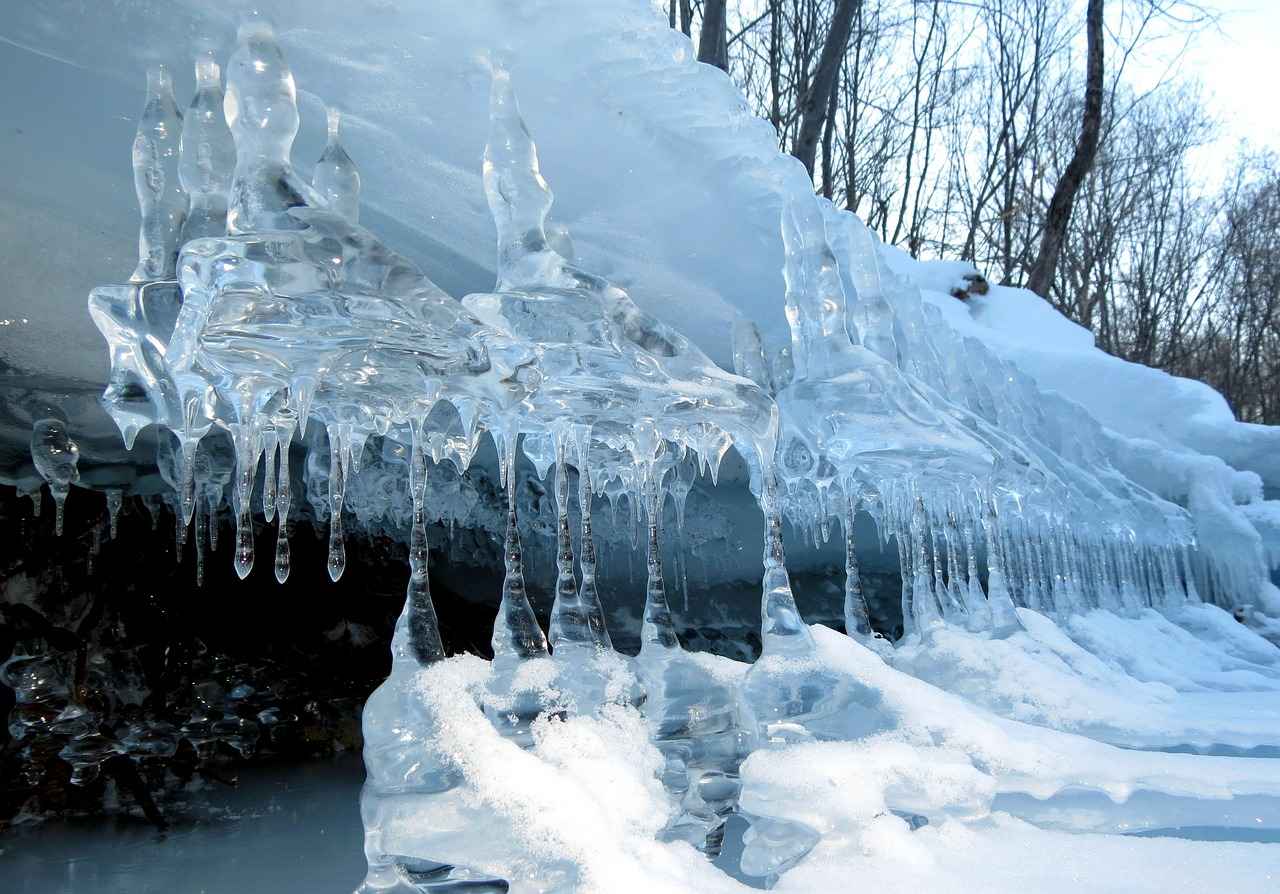
Scientific Explanations for the Mpemba Effect
The phenomenon known as the Mpemba effect has intrigued scientists and laypeople alike, leading to numerous theories aimed at explaining why warm water might freeze faster than cold water. This section provides an in-depth exploration of the most widely accepted scientific explanations for this counterintuitive occurrence.
- Evaporation – One of the most prominent theories suggests that evaporation plays a significant role in the Mpemba effect. When warm water is exposed to air, it tends to lose some of its mass due to evaporation. This loss of mass means that there is less water to freeze, allowing the remaining water to cool more rapidly. As the temperature drops, the remaining water can reach its freezing point sooner than the cooler water.
- Convection Currents – Warm water tends to create convection currents, which are movements within the water that help distribute heat more evenly. These currents can enhance the cooling process by allowing warmer water at the surface to mix with cooler water below. As a result, the overall temperature of the water can drop more quickly, facilitating faster freezing.
- Supercooling – Another explanation involves the phenomenon of supercooling, where water can remain in a liquid state even below its freezing point. Warm water may have a greater tendency to supercool, and when it finally does freeze, it can do so rapidly. This sudden transition from liquid to solid can create the appearance that warm water freezes faster than cold water.
- Container Effects – The material and shape of the container holding the water can also influence freezing rates. For instance, a shallow container may allow for faster heat dissipation compared to a deep one. Additionally, certain materials may conduct heat more effectively, impacting how quickly the water cools and eventually freezes.
- Air Pressure and Environmental Conditions – Environmental factors such as air pressure and humidity can also play a crucial role in the freezing process. Changes in atmospheric pressure can affect the boiling point of water and its evaporation rate, potentially influencing how quickly warm water reaches its freezing point.
While these explanations provide a framework for understanding the Mpemba effect, it is essential to note that the phenomenon can vary based on specific conditions and experimental setups. Researchers continue to investigate the complexities surrounding this intriguing occurrence, leading to ongoing discussions in the scientific community.
In conclusion, the Mpemba effect is a fascinating subject that challenges our understanding of thermodynamics and the behavior of water. By examining the various factors that contribute to this phenomenon, we can gain insights into not only the freezing process but also the fundamental principles of physics and chemistry.
Evaporation and Cooling
The phenomenon of warm water freezing faster than cold water, known as the Mpemba effect, has intrigued scientists for decades. Among the various explanations proposed, one of the most significant factors contributing to this effect is evaporation. This section delves into how evaporation plays a crucial role in the cooling process of warm water, ultimately influencing its freezing time.
When warm water is exposed to air, it begins to lose some of its mass through evaporation. This process involves the transition of water molecules from the liquid phase to the vapor phase. As the warmer water molecules gain energy, they move more rapidly and are more likely to escape into the air. This loss of mass leads to a decrease in the overall volume of water, which can significantly affect the freezing rate.
| Factors Affecting Evaporation | Impact on Freezing Rate |
|---|---|
| Temperature | Higher temperatures increase evaporation rates, leading to faster cooling. |
| Surface Area | Larger surface areas allow more molecules to escape, enhancing evaporation. |
| Humidity | Lower humidity levels promote evaporation, accelerating the cooling process. |
As warm water evaporates, it cools down more rapidly than its colder counterpart. This rapid cooling is essential in understanding why warm water can freeze faster. The loss of water through evaporation not only reduces the volume but also allows the remaining water to reach lower temperatures more quickly. In essence, the evaporative cooling effect can create a scenario where the warm water, despite starting at a higher temperature, reaches the freezing point sooner than the cold water.
Moreover, the rate of evaporation can be influenced by several environmental factors. For example, when warm water is placed in a drafty area or exposed to low humidity, the evaporation rate increases, further enhancing the cooling process. Conversely, in a humid environment, the rate of evaporation slows down, which could hinder the rapid cooling of warm water.
Another interesting aspect of evaporation is its relationship with energy transfer. As water molecules escape into the air, they take with them energy in the form of heat. This energy loss is crucial in cooling the remaining water, allowing it to reach the freezing point faster. The concept of latent heat also plays a role here; as water transitions from liquid to vapor, it absorbs heat from its surroundings, which contributes to the cooling effect.
In summary, evaporation significantly contributes to the freezing process of warm water. By losing mass and energy, warm water can cool down more rapidly than cold water, leading to the intriguing phenomenon of the Mpemba effect. Understanding this relationship not only sheds light on the complexities of freezing but also opens up avenues for further research into thermal dynamics and phase changes.
Convection Currents
The phenomenon of plays a crucial role in understanding how warm water can potentially freeze faster than cold water. This intriguing aspect of fluid dynamics illustrates how temperature differences within a liquid can lead to significant variations in freezing times. In this section, we will explore the mechanics of convection currents and their impact on the freezing process.
When water is heated, it becomes less dense and rises to the surface, while the cooler, denser water sinks. This continuous cycle creates that facilitate the movement of heat throughout the liquid. As warm water is subjected to these currents, the heat is distributed more evenly, which can lead to a more efficient cooling process.
The enhanced heat distribution caused by convection currents can expedite the overall cooling of water. In a typical scenario, as warm water is exposed to colder air or surfaces, the upper layers lose heat more quickly than the lower layers. However, the presence of convection currents helps to mix the warmer and cooler layers, allowing the entire body of water to cool at a more uniform rate. This process can significantly lower the temperature of the water, potentially leading to faster freezing times.
| Process | Description |
|---|---|
| Heating | Warm water becomes less dense and rises, creating convection currents. |
| Cooling | Cooler water sinks, allowing warmer water to rise and mix. |
| Heat Distribution | Convection currents help distribute heat evenly throughout the water. |
| Freezing | Enhanced cooling leads to faster freezing of the entire body of water. |
Moreover, the initial temperature of the water can influence the strength and efficiency of these convection currents. Warmer water, having a higher initial temperature, creates stronger currents that can lead to a more rapid cooling effect. This can be particularly evident in larger volumes of water where the convection currents can be more pronounced.
In addition to convection currents, other factors also contribute to the freezing process. For instance, the shape and size of the container, as well as environmental conditions such as air temperature and humidity, can all affect how quickly water freezes. However, understanding convection currents provides a foundational insight into the complexities of heat transfer in liquids.
In summary, convection currents in warm water significantly enhance heat distribution, leading to potentially faster freezing times. By facilitating the mixing of temperature layers, these currents help lower the water’s overall temperature more effectively than in stagnant or cooler water. This insight not only deepens our understanding of the Mpemba effect but also provides practical implications for various scientific and culinary applications.

Experimental Evidence Supporting the Mpemba Effect
The Mpemba effect, a fascinating phenomenon where warm water may freeze faster than cold water, has intrigued scientists and laypeople alike. Numerous experiments have been conducted to investigate this effect, yielding a mix of supporting and contradictory results. This section highlights key studies that have explored the Mpemba effect, shedding light on its complexities and the ongoing debate surrounding it.
Notable Experiments in the Field
- Mpemba’s Original Experiment (1963): Erasto Mpemba’s initial experiment involved heating milk and then placing it in a freezer. He observed that the warmer milk froze faster than the cooler milk, prompting further investigations.
- University Studies (2003): A notable study conducted by researchers at the University of Oregon aimed to replicate Mpemba’s findings. They found that under certain conditions, warm water did freeze faster than cold water, particularly when evaporation was considered as a factor.
- Recent Research (2017): A team from the University of California conducted experiments demonstrating that when warm and cold water were placed in identical containers, the warm water sometimes froze faster. This study emphasized the role of convection currents in the freezing process.
Critiques of Experimental Findings
Despite some studies supporting the Mpemba effect, others have raised questions about its validity. Critics argue that experimental setups often fail to account for all variables that influence freezing rates. For instance, factors such as container material, water purity, and environmental conditions can significantly affect outcomes.
- Variability in Results: Many experiments report inconsistent results, leading to skepticism about the Mpemba effect’s reliability. Some researchers suggest that the phenomenon may only occur under specific conditions, making it challenging to replicate consistently.
- Environmental Influences: Factors such as air temperature, humidity, and even the presence of impurities can alter the freezing process. Critics argue that without controlled conditions, it is hard to draw definitive conclusions about the Mpemba effect.
Scientific Community’s Response
The scientific community remains divided on the Mpemba effect. While some researchers advocate for its validity, others call for more rigorous testing and validation. The lack of consensus highlights the need for further research to understand the underlying mechanisms at play.
In conclusion, the experimental evidence surrounding the Mpemba effect is rich and varied, with notable studies both supporting and challenging its existence. As scientists continue to explore this intriguing phenomenon, the quest for clarity and understanding remains an exciting frontier in the field of thermodynamics.
Notable Experiments
The Mpemba effect continues to intrigue scientists and enthusiasts alike, prompting numerous experiments to explore its validity. This section delves into notable studies that have attempted to replicate the Mpemba effect, shedding light on the complexities surrounding this phenomenon.
- Mpemba and Osborne’s Experiment (2013): In a significant study, researchers Mpemba and Osborne revisited the original observations made by Erasto Mpemba. They conducted a series of controlled experiments comparing the freezing rates of warm and cold water. Their findings suggested that under specific conditions, warm water did indeed freeze faster, particularly when factors such as container material and environmental temperature were optimized.
- University of Oregon Study (2015): A team from the University of Oregon explored the Mpemba effect by examining the role of evaporation and supercooling. They found that warm water, when subjected to rapid cooling in a vacuum, could freeze faster due to less mass and the presence of supercooled liquid. This experiment provided valuable insights into the thermodynamic principles at play.
- Research by the University of Loughborough (2019): This research focused on the influence of convection currents in warm water. The team observed that these currents promoted a more uniform temperature distribution, enhancing the freezing process. Their results indicated that the Mpemba effect could be replicated in certain laboratory settings, reinforcing the idea that water’s behavior is influenced by its initial temperature.
- Field Experiment in Antarctica (2020): A unique study was conducted in Antarctica, where researchers tested the Mpemba effect in extreme cold conditions. They found that in certain instances, warm water did freeze faster than cold water, particularly when subjected to windy conditions. This field study highlighted the importance of environmental factors in understanding the Mpemba effect.
- International Collaborative Study (2021): In a groundbreaking collaborative effort, scientists from around the globe pooled their resources to investigate the Mpemba effect. They conducted a series of experiments using various types of water and containers. The results were mixed, with some trials supporting the effect while others did not. This comprehensive approach emphasized the complexity of the phenomenon and the need for further research.
These studies illustrate the ongoing interest in the Mpemba effect and underscore the importance of controlled experiments in scientific inquiry. As researchers continue to explore this phenomenon, they not only seek to understand the Mpemba effect itself but also aim to unravel the broader implications of temperature and freezing dynamics in various contexts.
In conclusion, while the Mpemba effect has been observed in various settings, the results remain inconsistent, highlighting the need for continued exploration. Each experiment contributes to a deeper understanding of the factors influencing freezing rates, paving the way for future research and potentially practical applications in fields such as food preservation and climate science.
Critiques of Experimental Findings
The Mpemba effect, a phenomenon where warm water freezes faster than cold water, has sparked considerable debate within the scientific community. While some studies have provided evidence supporting this effect, others have raised significant questions regarding the validity of these findings. This section aims to delve into the critiques and limitations of the experiments conducted to explore the Mpemba effect.
One of the primary critiques of the experimental findings related to the Mpemba effect is the reproducibility of results. Many experiments that claim to demonstrate the phenomenon often yield inconsistent results. For instance, researchers have noted that slight variations in experimental conditions, such as temperature, humidity, and even the type of water used, can lead to different outcomes. This inconsistency raises doubts about whether the Mpemba effect can be reliably observed or replicated.
Another significant limitation is the lack of controlled variables in many experiments. In scientific research, controlling variables is crucial to ensure that the results are due to the factor being tested—in this case, the temperature of the water. However, many studies fail to adequately control for factors such as container material, shape, and initial water impurities, which can all influence freezing rates. Without properly controlled experiments, it becomes challenging to draw definitive conclusions regarding the Mpemba effect.
Additionally, some researchers argue that the explanations proposed for the Mpemba effect, such as evaporation and convection currents, may not fully account for the observed phenomenon. Critics suggest that while these factors could play a role, they do not provide a comprehensive explanation. This leaves the scientific community questioning whether the Mpemba effect is a genuine phenomenon or merely an artifact of specific experimental conditions.
Moreover, the role of environmental conditions cannot be overlooked. Factors such as air pressure and ambient temperature can significantly influence the freezing process. Some critics point out that many experiments do not account for these variables, leading to potentially skewed results. For instance, a study conducted in a high-altitude environment may produce different results than one conducted at sea level due to differences in air pressure.
Furthermore, the psychological aspect of the Mpemba effect cannot be ignored. The expectation or belief that warm water will freeze faster may inadvertently influence the outcomes of certain experiments. This phenomenon, known as the observer effect, suggests that the expectations of researchers could impact their measurements and interpretations.
Finally, the scientific community has noted that some studies supporting the Mpemba effect may suffer from publication bias. This bias occurs when studies that yield positive results are more likely to be published than those that do not. Consequently, the body of literature on the Mpemba effect may not provide a balanced view of the phenomenon, leading to an overrepresentation of supportive findings.
In summary, while the Mpemba effect remains a captivating topic of discussion, it is essential to approach the experimental findings with a critical eye. The critiques surrounding reproducibility, control of variables, environmental influences, and psychological factors all contribute to a complex understanding of this phenomenon. As research continues, it is crucial for scientists to address these limitations to gain a clearer insight into whether warm water truly freezes faster than cold water.
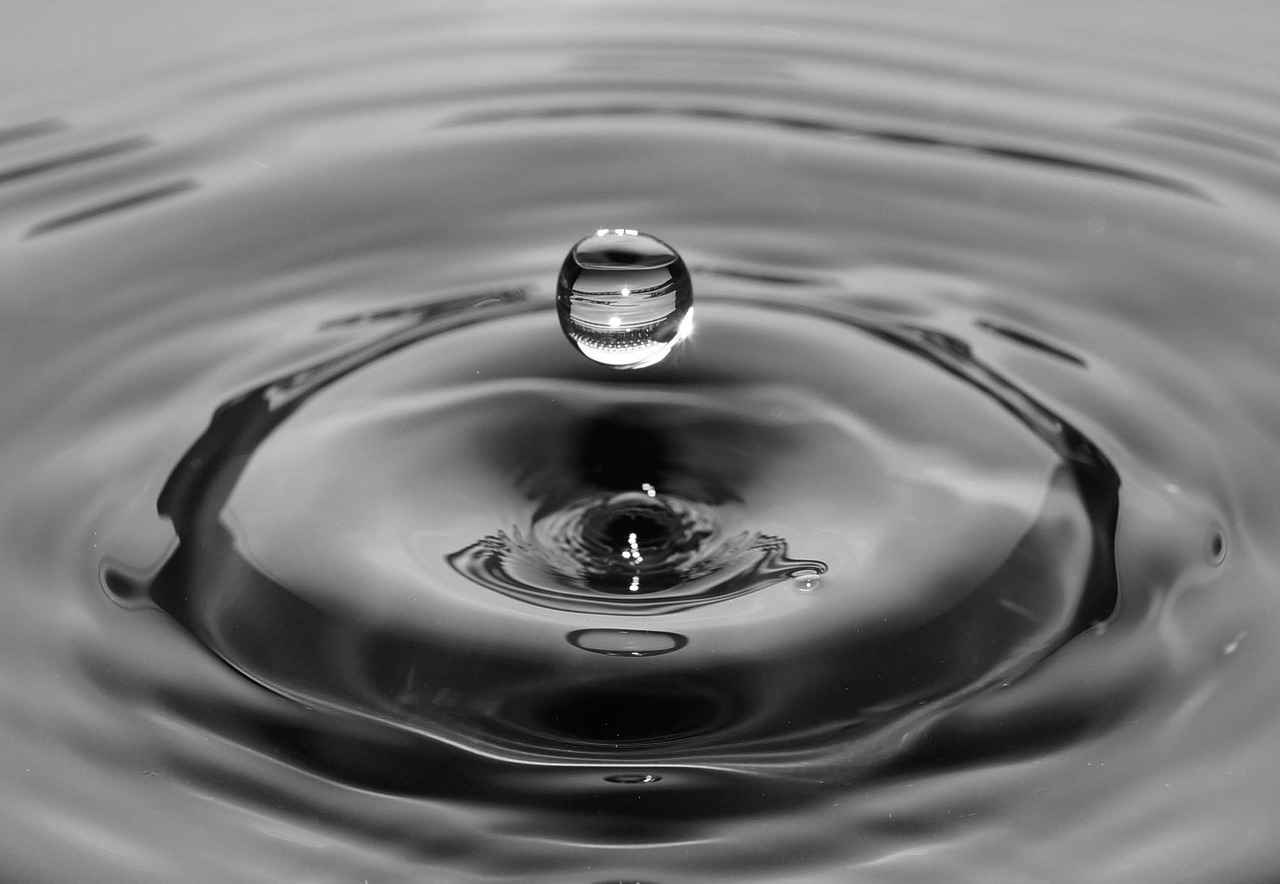
Factors Influencing the Freezing Process
The freezing process is a fascinating phenomenon influenced by numerous factors that can significantly alter the rate at which water transitions from liquid to solid. Understanding these factors is essential for both scientific research and practical applications. In this section, we will explore three primary influences on freezing rates: water purity, container shape, and environmental conditions.
The purity of water plays a crucial role in determining its freezing point. Impurities, such as salts, minerals, or organic materials, can disrupt the formation of ice crystals. For instance, the presence of salt lowers the freezing point of water, a principle that is utilized in various applications, such as de-icing roads during winter.
- Salt and Freezing Point Depression: The addition of salt to water can prevent it from freezing at 0°C (32°F), which is critical for maintaining liquid water in colder climates.
- Other Impurities: Different substances can have varying effects on freezing. For example, sugar can also lower the freezing point but may not be as effective as salt in practical applications.
The shape and size of the container holding the water can significantly affect how quickly it freezes. Containers with larger surface areas allow for greater heat exchange, which can expedite the cooling process.
| Container Shape | Effect on Freezing Rate |
|---|---|
| Shallow Pans | Freeze faster due to increased surface area. |
| Deep Containers | Freeze slower as heat is retained in the center. |
Moreover, the material of the container also matters. For example, metal containers conduct heat better than plastic ones, leading to faster freezing times.
The surrounding environmental conditions, such as temperature and airflow, play a vital role in the freezing process. The ambient temperature directly influences how quickly water can lose heat.
- Ambient Temperature: Water exposed to colder air will freeze faster than water in a warmer environment.
- Airflow: Increased airflow can enhance the cooling rate through convection, helping to remove heat more effectively from the water’s surface.
Additionally, factors such as humidity can also influence freezing. Higher humidity levels may slow down the freezing process due to the presence of moisture in the air, which can create a layer of insulation around the water.
In conclusion, the freezing process is not merely a straightforward transition of water to ice but is influenced by a variety of factors. Understanding the roles of water purity, container shape, and environmental conditions can provide valuable insights for both scientific study and practical applications. By manipulating these factors, we can optimize freezing processes in various fields, from culinary arts to climate science.
Water Purity and Impurities
The freezing process of water is influenced by a variety of factors, one of which is the purity of the water. The presence of impurities can significantly alter the freezing point, leading to intriguing outcomes that challenge our understanding of basic physical principles. This section delves into the impact of different types of impurities on the freezing process.
When impurities are introduced into water, they can disrupt the orderly formation of ice crystals. Pure water freezes at 0°C (32°F), but the addition of impurities can lower this freezing point, a phenomenon known as freezing point depression. This effect occurs because the presence of solute particles interferes with the ability of water molecules to bond together in a solid structure.
- Salt: One of the most common impurities, salt lowers the freezing point of water significantly. This is why salt is often used on roads during winter; it prevents ice formation by keeping the water from freezing.
- Organic Compounds: Substances like sugar or alcohol can also lower the freezing point. For instance, adding sugar to water can result in a mixture that freezes at a temperature lower than 0°C.
- Minerals: Various minerals found in natural water sources can alter the freezing point as well. The specific impact depends on the type and concentration of the minerals present.
Research has shown that even small amounts of impurities can affect the freezing process. In controlled experiments, scientists have observed that water with impurities takes longer to freeze compared to pure water. This delay can be attributed to the need for water molecules to overcome the disruptive effects of the impurities before forming a solid structure.
Moreover, the nature of the impurities plays a crucial role. For example, ionic compounds like salt dissociate into charged particles, which can further complicate the freezing process by hindering the formation of ice crystals. On the other hand, non-ionic compounds may have different effects based on their molecular structure.
The understanding of how impurities affect freezing has practical implications in various fields. In the culinary world, chefs often utilize the knowledge of freezing point depression to create unique textures in frozen desserts. For example, ice creams and sorbets often contain sugar, which helps maintain a smooth and creamy consistency by preventing the formation of large ice crystals.
In environmental science, the effects of impurities on freezing can inform our understanding of natural water bodies. For instance, in lakes and rivers, the presence of pollutants can alter the freezing dynamics, potentially affecting aquatic life during winter months. Understanding these dynamics is crucial for ecological conservation and water management.
In summary, the presence of impurities in water significantly impacts its freezing point and the overall freezing process. By understanding these effects, we gain insights not only into basic physical principles but also into practical applications that can enhance our daily lives and inform scientific research. As we continue to explore the complexities of water and its behavior, the role of impurities remains an essential area of study.
Container Shape and Size
The shape and size of the container holding water are critical factors that can significantly influence the rate of heat transfer, which in turn affects the freezing process. Understanding how these elements interact with temperature and environmental conditions can provide valuable insights into the Mpemba effect and its practical applications.
When discussing the freezing of water, it is essential to recognize that heat transfer occurs through conduction, convection, and radiation. The shape of the container plays a vital role in determining how efficiently heat is lost from the water to its surroundings. For instance, a container with a larger surface area, such as a wide, shallow dish, allows for greater heat dissipation compared to a tall, narrow container. This increased exposure to cooler air can lead to faster cooling and, consequently, quicker freezing.
Additionally, the size of the container matters significantly. A smaller volume of water in a compact container will generally freeze faster than a larger volume in a more extensive one, assuming all other conditions are equal. This phenomenon can be attributed to the ratio of surface area to volume. In smaller containers, the surface area is relatively larger compared to the volume, promoting more efficient heat loss.
| Container Type | Surface Area | Volume | Freezing Time |
|---|---|---|---|
| Shallow Dish | High | Low | Short |
| Tall Cylinder | Low | High | Long |
| Wide Bowl | Medium | Medium | Medium |
Moreover, the material of the container also influences heat transfer. For example, metal containers, which are good conductors of heat, will allow water to cool more rapidly than plastic containers, which are insulators. This difference in thermal conductivity can lead to variations in freezing rates, further complicating the relationship between container characteristics and freezing behavior.
Another factor to consider is the environment in which the freezing occurs. Airflow, temperature fluctuations, and even the presence of other objects around the container can affect how quickly heat is transferred away from the water. For instance, placing a container in a drafty area may enhance cooling due to increased air movement, while a still environment may slow down the process.
In summary, the shape and size of the container holding the water are crucial elements that significantly impact heat transfer and, consequently, the freezing rates of water. By optimizing these factors, one can potentially leverage the Mpemba effect for practical applications, such as improving food preservation techniques or enhancing cooling processes in various scientific fields.
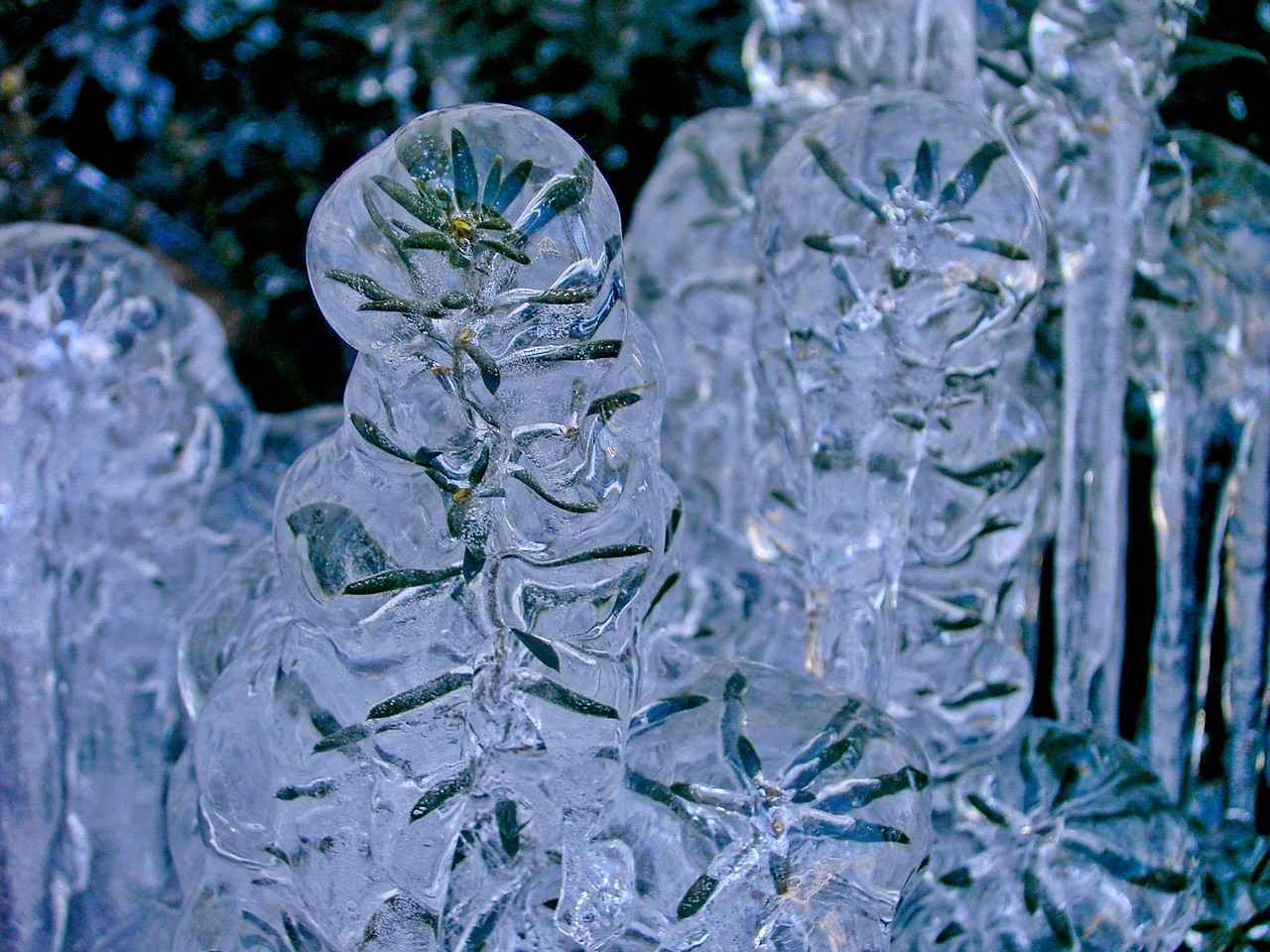
Real-World Applications of the Mpemba Effect
The Mpemba effect, a fascinating phenomenon where warm water can freeze faster than cold water, has captured the attention of scientists and researchers alike. Beyond its intriguing nature, understanding this effect has significant practical implications across various fields, including food preservation and climate science. This section delves into the potential applications of the Mpemba effect, highlighting its relevance in everyday life and scientific research.
In the culinary world, the Mpemba effect can be a game-changer for food preservation. Chefs and food scientists are increasingly recognizing that by freezing warm food items, they can achieve faster freezing times, which helps in maintaining the food’s quality and safety. The rapid freezing process minimizes the formation of ice crystals, which can damage cell structures in food, leading to a better texture and taste upon thawing.
- Quick Freezing of Soups and Sauces: By utilizing warm water or broth, chefs can freeze soups and sauces more effectively, preserving their flavor and nutritional value.
- Ice Cream Production: The Mpemba effect can be harnessed in ice cream production, where warm mixtures freeze faster, resulting in a smoother texture.
- Meat Preservation: For meat products, quick freezing can prevent the growth of harmful bacteria, making the Mpemba effect a useful tool in food safety.
In the realm of climate science, the Mpemba effect offers insights into natural ice formation processes. Understanding how warm water behaves in freezing conditions can enhance our knowledge of snow and ice dynamics in different environments, particularly in polar regions.
- Ice Formation in Glaciers: Researchers are investigating how the Mpemba effect may influence the rate of ice formation in glaciers, which is crucial for understanding climate change.
- Impact on Weather Patterns: The phenomenon could provide clues about how different water temperatures affect local weather patterns, particularly in regions with significant bodies of water.
- Modeling Climate Change: Incorporating the Mpemba effect into climate models may improve predictions related to ice melt rates and their contribution to sea-level rise.
The Mpemba effect is not limited to food and climate science; it also has potential applications in various industrial processes. Industries that rely on freezing or cooling processes can benefit from this phenomenon.
- Manufacturing: In certain manufacturing processes, understanding the freezing rates can optimize production times and energy efficiency.
- Cooling Systems: Engineers can design better cooling systems for industrial applications by applying principles derived from the Mpemba effect.
In conclusion, the Mpemba effect extends beyond a mere scientific curiosity; it has practical applications that can enhance food preservation techniques, contribute to climate science, and improve industrial processes. As research continues, the implications of this phenomenon may lead to innovative solutions that address both culinary and environmental challenges.
Food Preservation Techniques
The Mpemba effect, an intriguing phenomenon where warm water freezes faster than cold water, has garnered significant interest in various fields, particularly in the culinary arts. Chefs and food scientists are increasingly leveraging this effect to optimize food preservation techniques, enhancing both efficiency and quality in food freezing processes.
One of the primary ways the Mpemba effect is utilized in the kitchen is through rapid freezing methods. When chefs understand the dynamics of this effect, they can strategically choose to freeze warm food items rather than waiting for them to cool down. This approach not only saves time but also helps maintain the texture and flavor of the food. For instance, when making ice cream, starting with a warm mixture can lead to a smoother texture, as the quicker freezing process reduces the formation of ice crystals.
Additionally, the Mpemba effect can be particularly beneficial in industrial food processing. Food scientists are exploring how to implement this phenomenon in large-scale freezing operations. By using warm water or food mixtures, they can potentially reduce energy consumption and improve the overall freezing efficiency of the production line. This method can be especially advantageous in the meat and seafood industries, where maintaining freshness is crucial.
Another fascinating application is in the realm of sous-vide cooking. Sous-vide involves cooking food in a vacuum-sealed bag immersed in water at a precise temperature. By utilizing warm water for the initial cooking phase, chefs can take advantage of the Mpemba effect to ensure that the food freezes quickly after cooking. This not only preserves the integrity of the food but also enhances the flavor profile, as rapid cooling locks in taste and nutrients.
Furthermore, the Mpemba effect opens up possibilities for home cooks as well. Understanding this phenomenon can lead to more effective freezing practices in everyday cooking. For example, when preparing soups or sauces, starting with a warm mixture can expedite the freezing process, making it easier to store leftovers without compromising quality.
However, it is essential to note that the Mpemba effect’s effectiveness can be influenced by several factors, including the container material, the type of food being frozen, and the surrounding environmental conditions. For instance, using shallow containers can enhance the cooling process, allowing for faster heat dissipation. Additionally, the presence of impurities in the water can also affect freezing rates, making it crucial to consider the quality of water used.
In conclusion, the Mpemba effect presents a unique opportunity for chefs and food scientists alike to innovate and improve food preservation techniques. By embracing this phenomenon, professionals in the culinary world can enhance their processes, save time, and maintain the highest quality in their food products. As research continues to uncover the intricacies of this effect, its applications are likely to expand, paving the way for exciting advancements in food science and culinary practices.
Climate Science Implications
The Mpemba effect, wherein warm water can freeze faster than cold water, presents intriguing possibilities in the realm of climate science. Understanding this phenomenon could lead to significant insights into ice formation and its implications in natural environments. This section delves into the relationship between the Mpemba effect and climate science, exploring its potential impact on various ecological and environmental processes.
Ice Formation Dynamics
In natural settings, the process of ice formation is complex and influenced by numerous factors, including temperature, water purity, and environmental conditions. The Mpemba effect suggests that under certain circumstances, warmer water might freeze more efficiently. This phenomenon could have implications for understanding how ice forms in different climates, particularly in polar regions where environmental conditions fluctuate.
Impact on Polar Ice Caps
The polar ice caps are critical indicators of climate change, and understanding the mechanisms behind ice formation can provide valuable data for climate models. If warm water can freeze faster in specific conditions, it may alter the dynamics of ice cap formation and melting. This could lead to a better understanding of how global warming affects ice stability and longevity, crucial for predicting future sea level rise.
Feedback Mechanisms in Climate Systems
Furthermore, the Mpemba effect may play a role in feedback mechanisms within climate systems. For instance, if warmer water leads to quicker ice formation, this could influence local temperatures and weather patterns. An increase in ice cover can reflect sunlight, further cooling the surrounding environment, creating a complex interplay between water temperature and ice dynamics.
Research Opportunities
Given the potential implications of the Mpemba effect on climate science, further research is warranted. Scientists can explore how this phenomenon interacts with various environmental factors, such as salinity levels in seawater or the presence of impurities. Understanding these interactions can enhance climate models and improve predictions related to ice formation and melting.
Practical Applications in Climate Monitoring
Additionally, insights gained from the Mpemba effect may lead to practical applications in climate monitoring. For instance, if researchers can establish reliable conditions under which warm water freezes faster, they could develop new techniques for observing and measuring ice formation in real-time, offering unprecedented data for climate research.
Conclusion
The Mpemba effect is not merely a curiosity of physics; its implications for climate science are profound. By unraveling the complexities of ice formation and understanding the conditions that favor the Mpemba effect, scientists can gain deeper insights into climate dynamics. As research continues, the relationship between warm water, ice formation, and climate change will likely reveal new avenues for understanding and addressing the challenges posed by a warming planet.
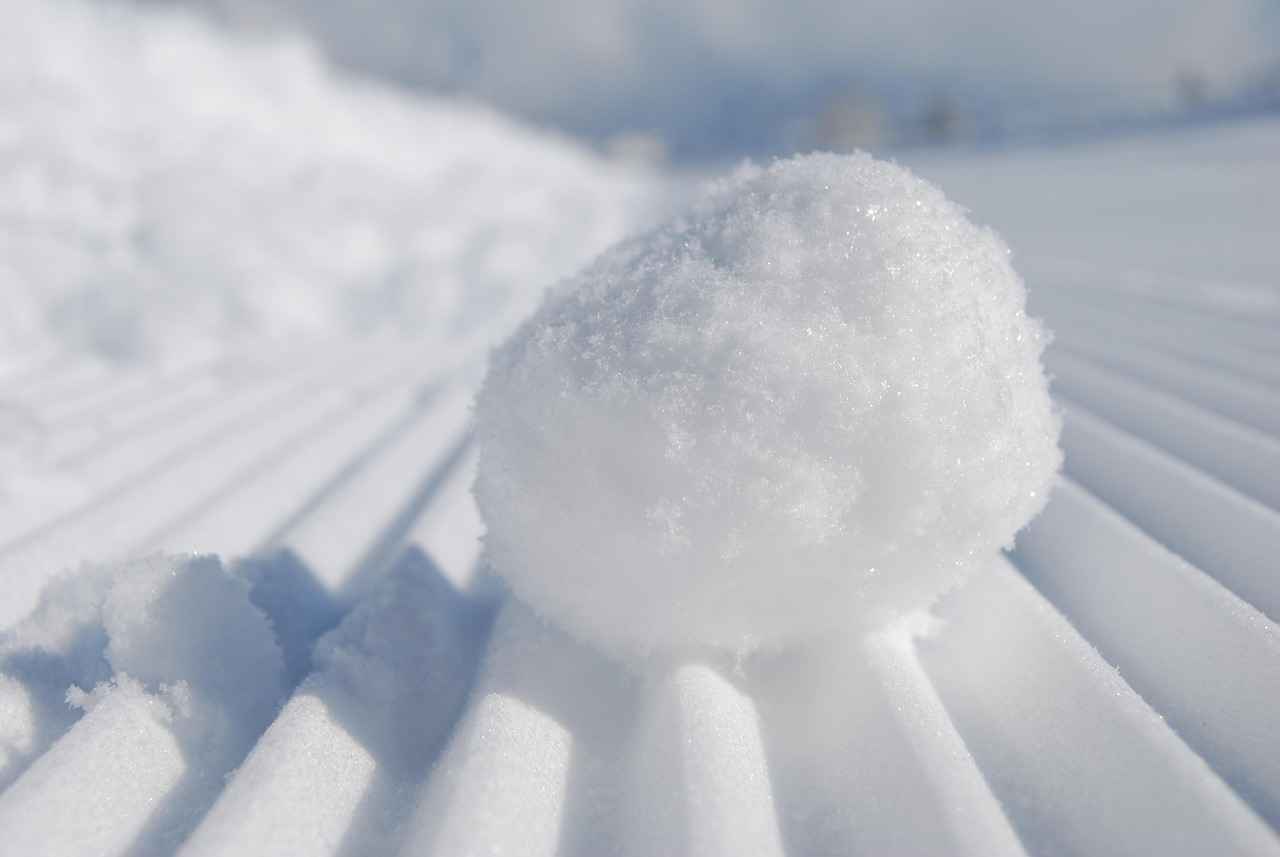
Conclusion: The Ongoing Debate
Despite numerous studies, the Mpemba effect remains a topic of debate among scientists. This phenomenon, where warm water freezes faster than cold water under certain conditions, continues to intrigue researchers and enthusiasts alike. As investigations progress, several questions remain unanswered, highlighting the complexities of this scientific enigma.
The Mpemba effect challenges our conventional understanding of thermodynamics and heat transfer. While many experiments have attempted to replicate the effect, the results have often been inconsistent. Some studies affirm that warm water can indeed freeze faster, while others fail to observe this behavior. This inconsistency raises critical questions about the underlying mechanisms at play.
One of the most significant areas of inquiry revolves around the role of evaporation. It is hypothesized that warm water, by losing some of its mass through evaporation, can cool down more rapidly than its colder counterpart. However, the extent to which evaporation contributes to the Mpemba effect remains a topic of contention. Further research is needed to quantify this effect and determine its impact on freezing rates.
Another factor that complicates the discussion is the presence of impurities in water. Studies indicate that impurities can alter the freezing point of water, potentially influencing the outcomes of experiments. This variability in water composition can lead to different freezing behaviors, making it difficult to draw definitive conclusions regarding the Mpemba effect.
Moreover, the container shape and size also play a crucial role in the freezing process. The geometry of the container can affect heat distribution and transfer rates, leading to variations in freezing times. Understanding how these factors interact with the Mpemba effect is essential for a comprehensive analysis.
As scientists continue to explore this phenomenon, they are also examining its practical applications. For instance, in the culinary world, chefs are increasingly interested in leveraging the Mpemba effect for food preservation. By understanding how warm water can freeze faster, culinary professionals can optimize freezing techniques to improve food quality and safety.
Furthermore, the implications of the Mpemba effect extend into climate science. Understanding how warm water freezes in natural environments can provide insights into ice formation and its impact on climate patterns. This intersection of physics and environmental science underscores the importance of continued research into the Mpemba effect.
In conclusion, the Mpemba effect is a fascinating topic that encapsulates the complexities of scientific inquiry. While progress has been made in understanding this phenomenon, many questions remain unanswered. Ongoing research is essential to unravel the mysteries of why warm water might freeze faster than cold water, potentially leading to breakthroughs in both theoretical physics and practical applications.
Frequently Asked Questions
- What is the Mpemba effect?
The Mpemba effect is a surprising phenomenon where warm water can freeze faster than cold water under certain conditions. It challenges our traditional understanding of freezing and has intrigued scientists for decades.
- Who discovered the Mpemba effect?
The effect is named after Erasto Mpemba, a Tanzanian student who first observed this curious behavior in the 1960s. His experiments sparked further interest and research into this intriguing topic.
- What are some theories explaining the Mpemba effect?
Several theories have emerged to explain the Mpemba effect, including evaporation, convection currents, and the presence of impurities in the water. Each theory offers a different perspective on why warm water might freeze faster.
- Are there experiments that support the Mpemba effect?
Yes, numerous experiments have been conducted, with mixed results. Some studies have successfully replicated the Mpemba effect, while others have raised questions about its validity.
- How do environmental factors influence freezing rates?
Factors such as water purity, container shape, and environmental conditions can significantly affect the freezing process. For example, impurities can alter the freezing point, while container shape can impact heat transfer.
- Can the Mpemba effect be applied in real life?
Absolutely! The Mpemba effect has practical implications in fields like food preservation, where it can be used to freeze food more quickly, and climate science, helping us understand ice formation in natural environments.
